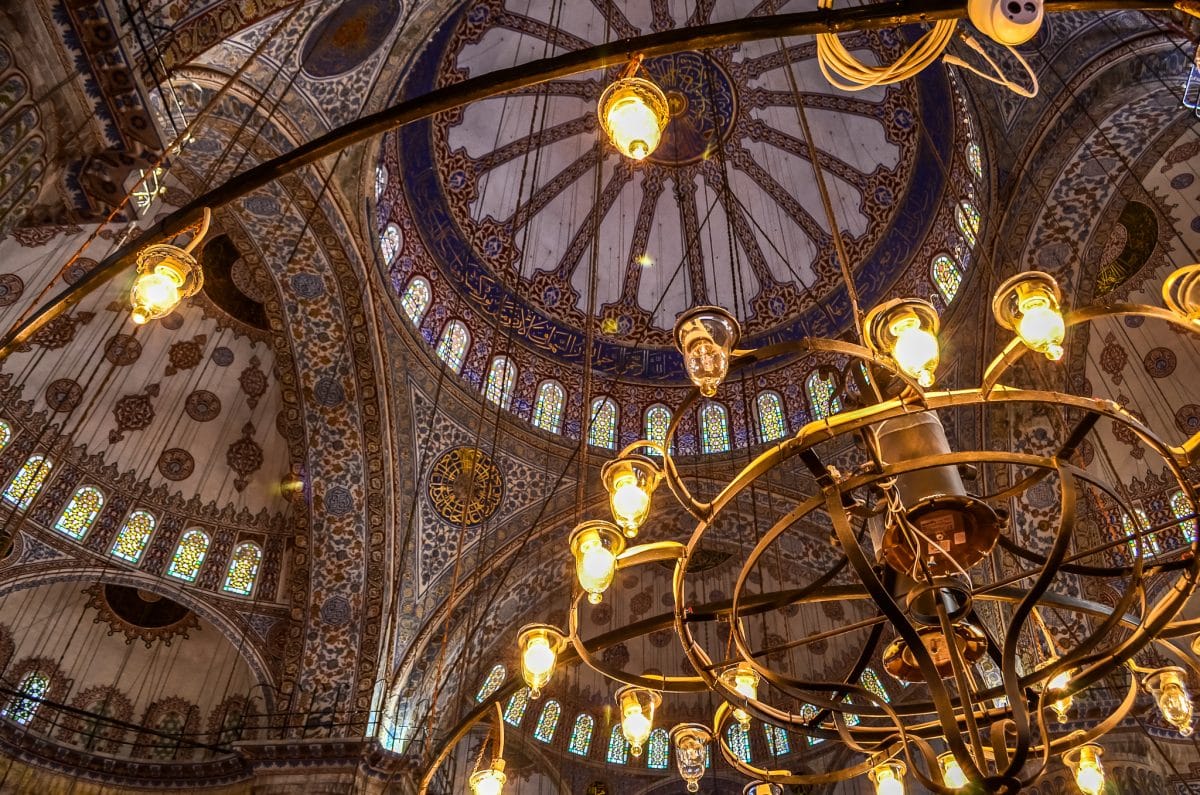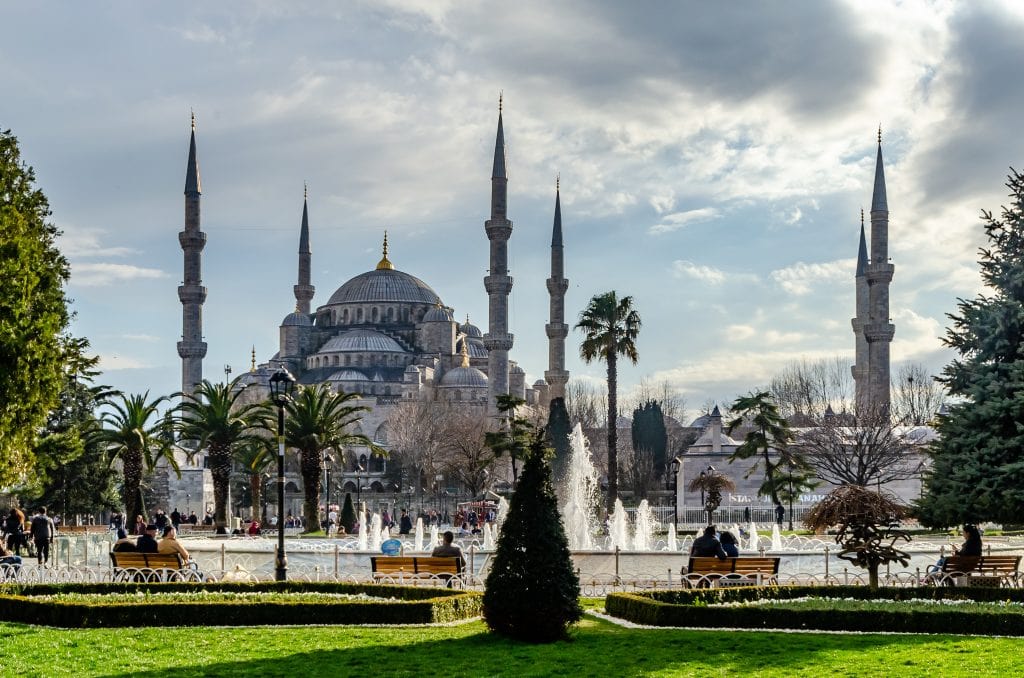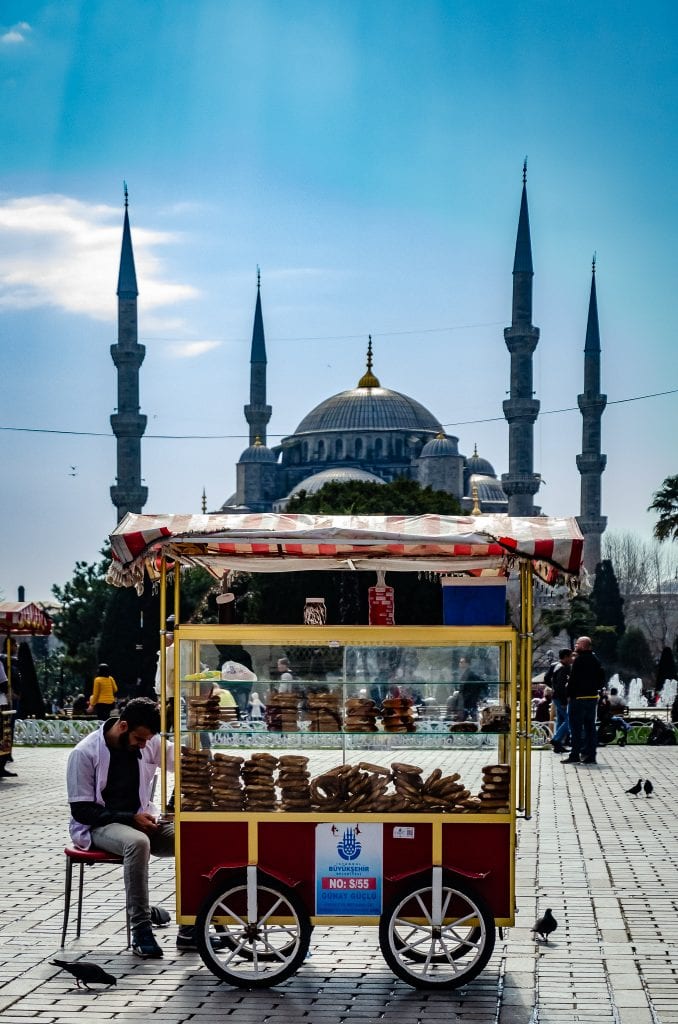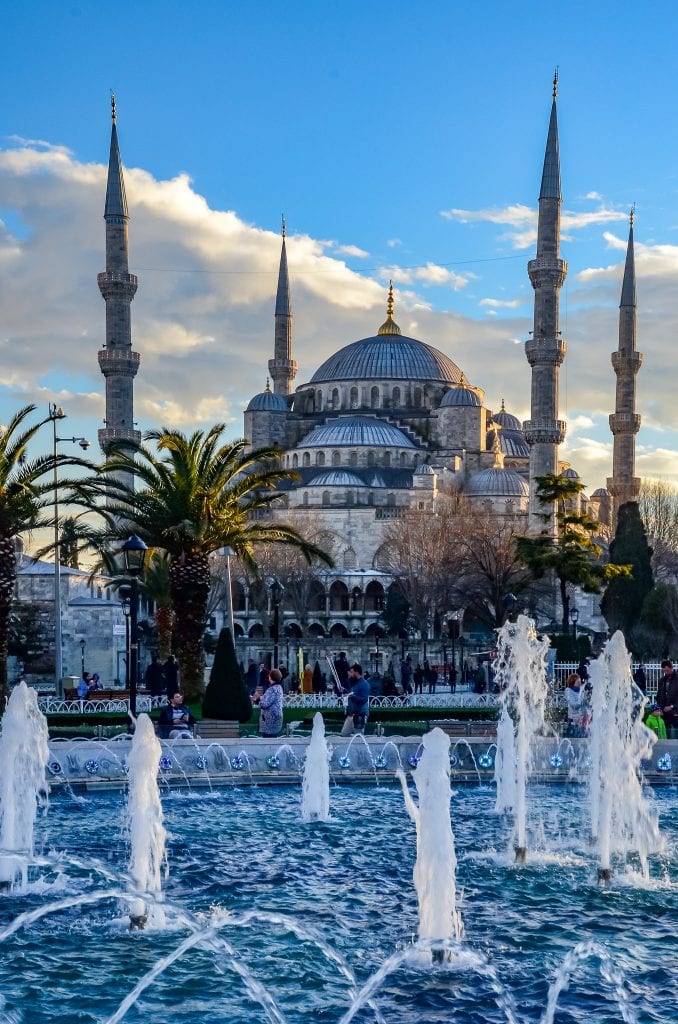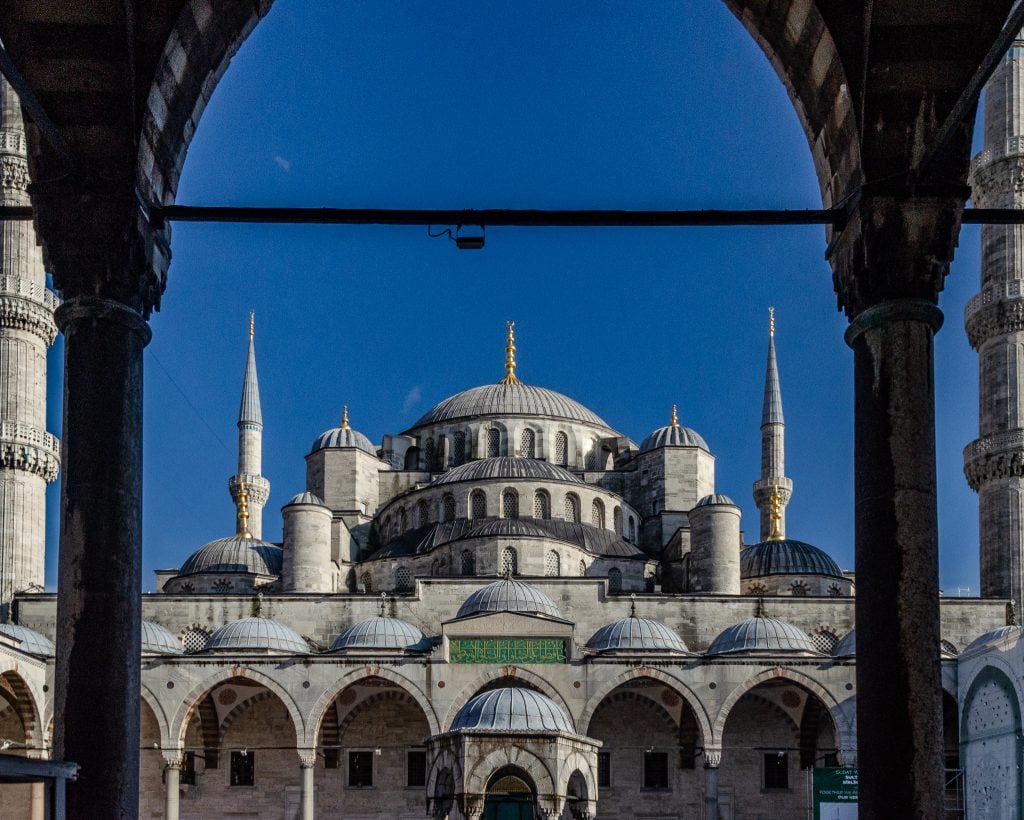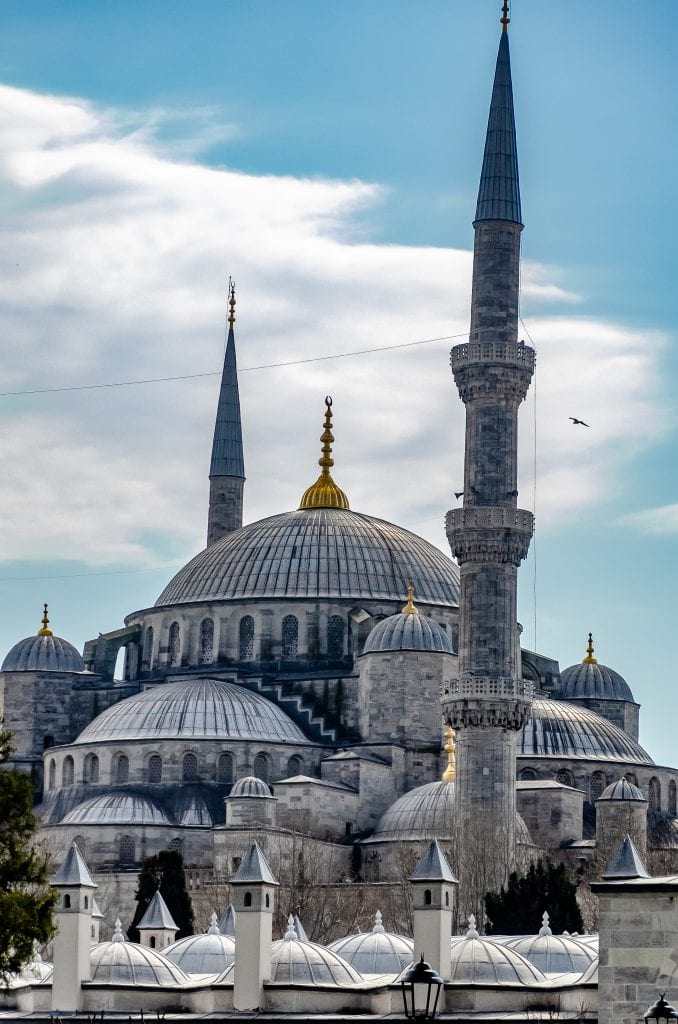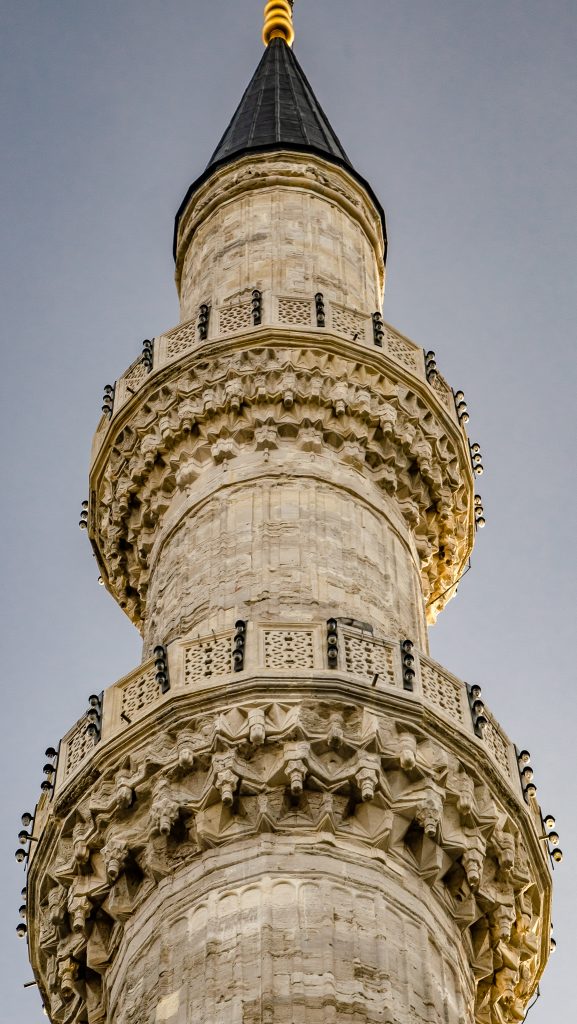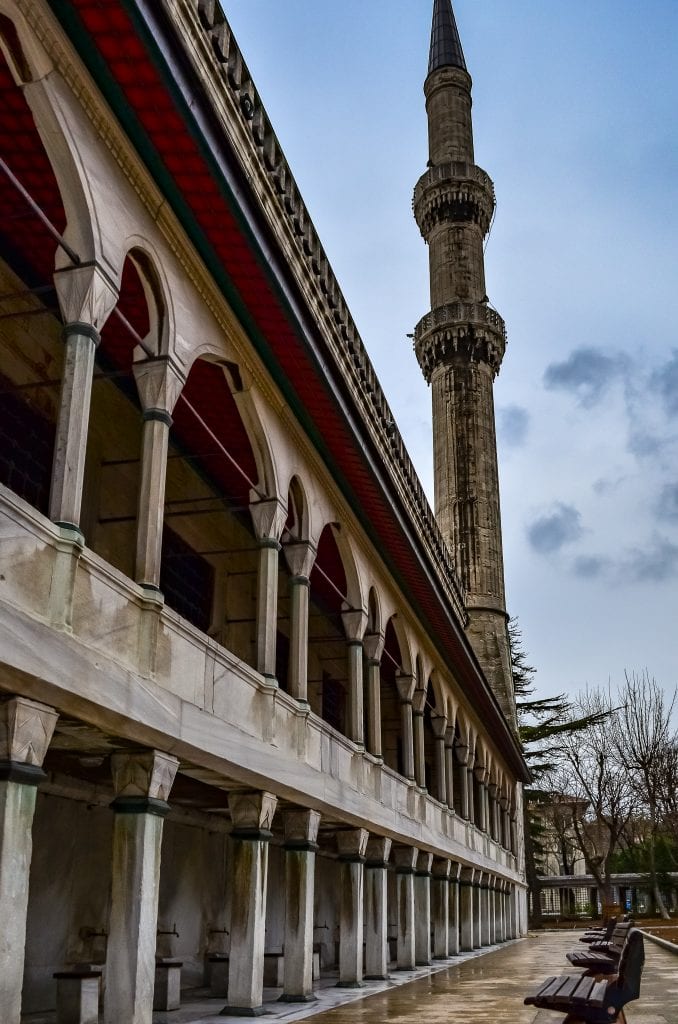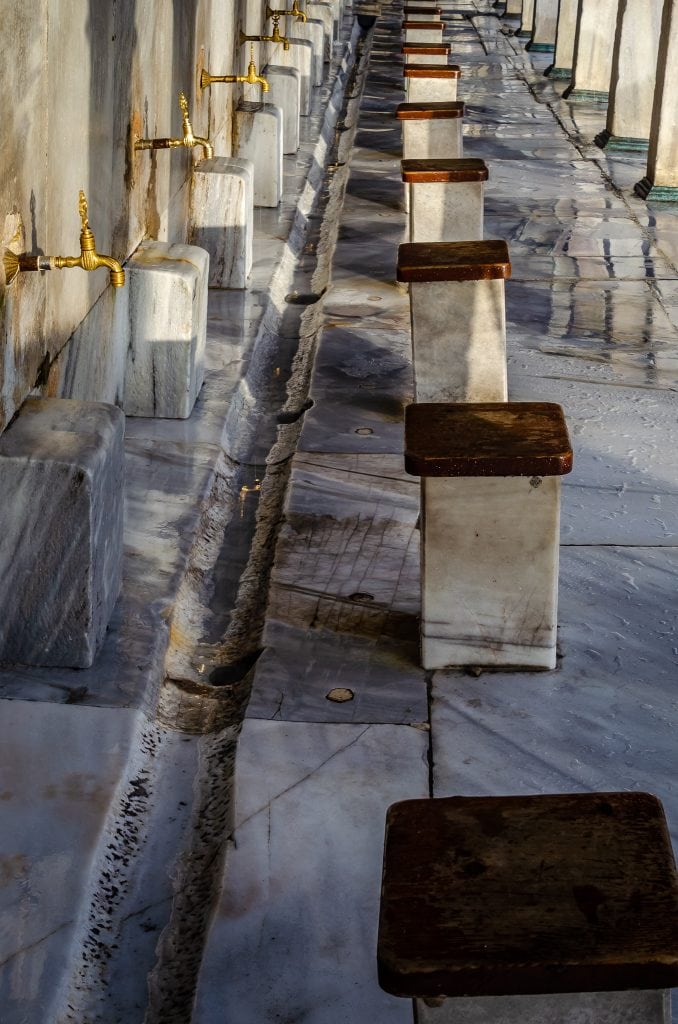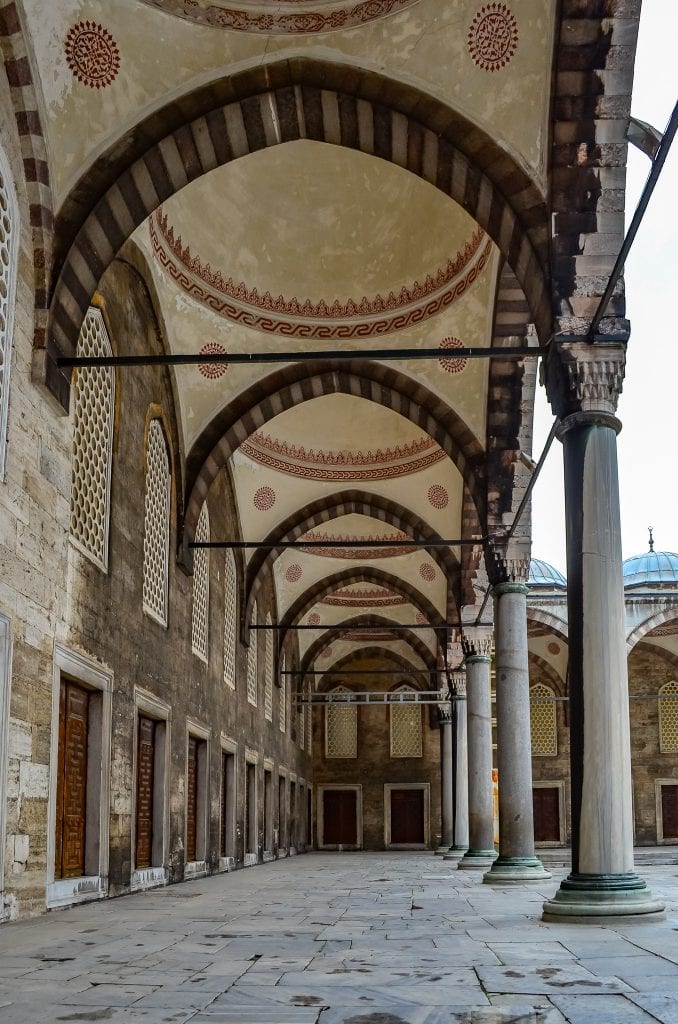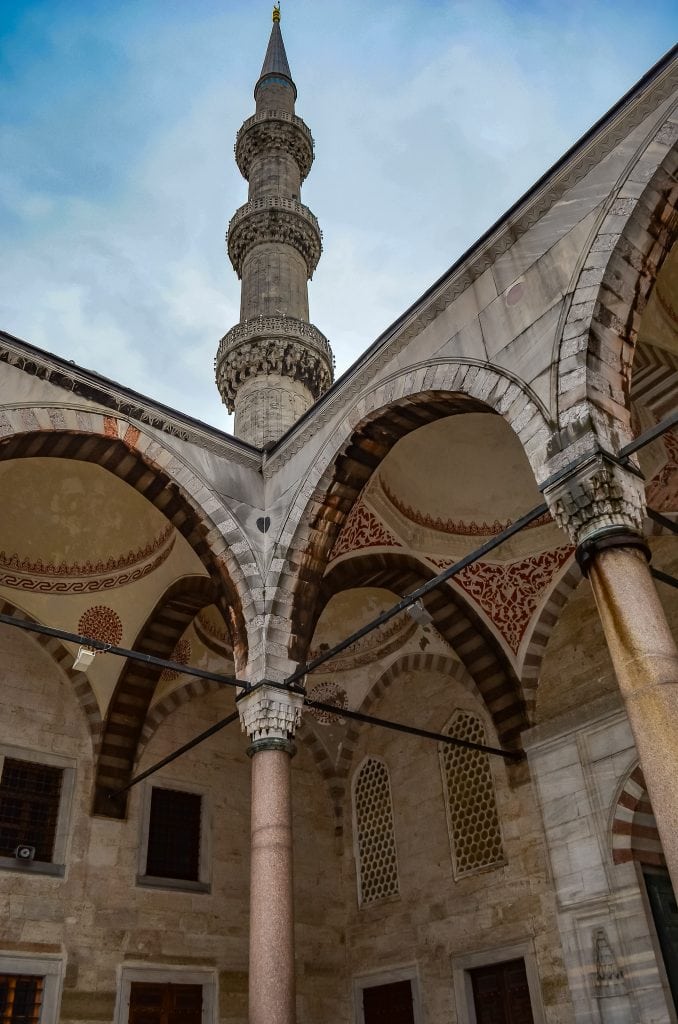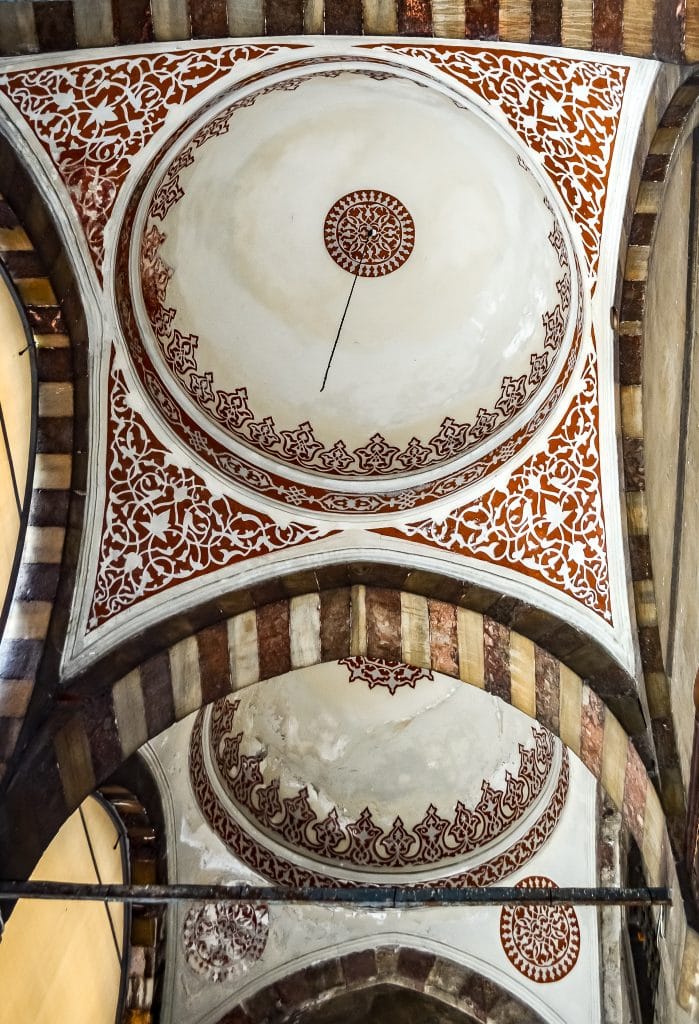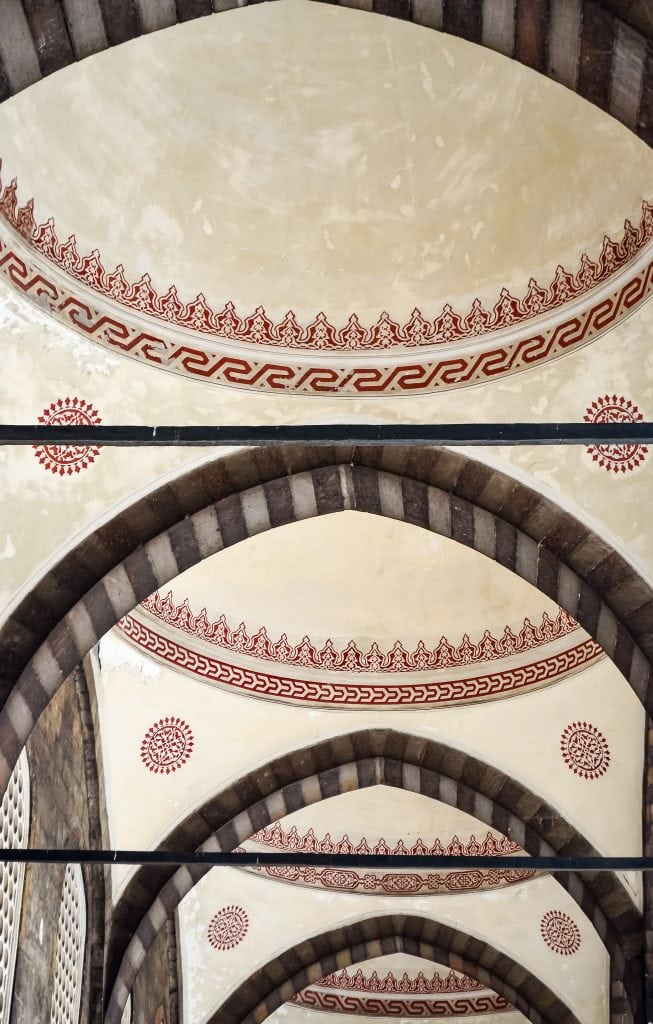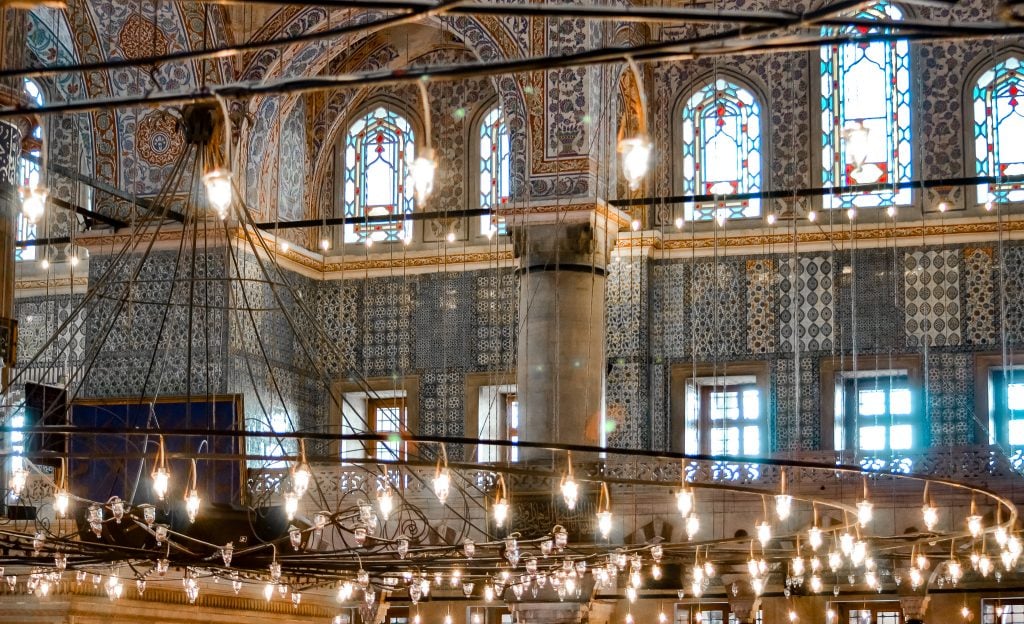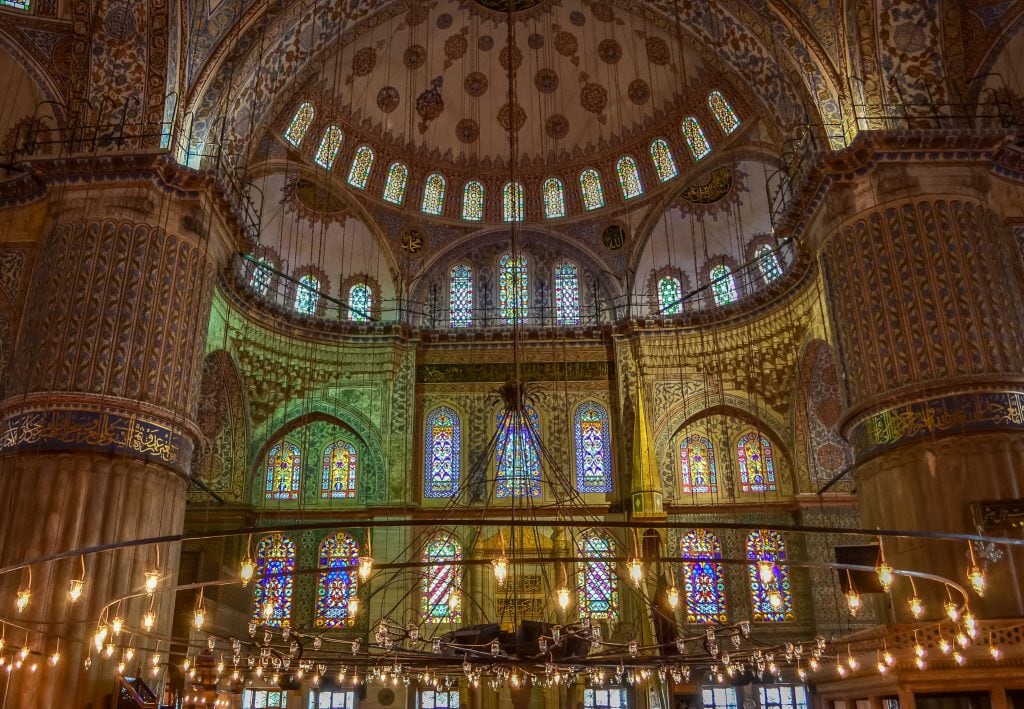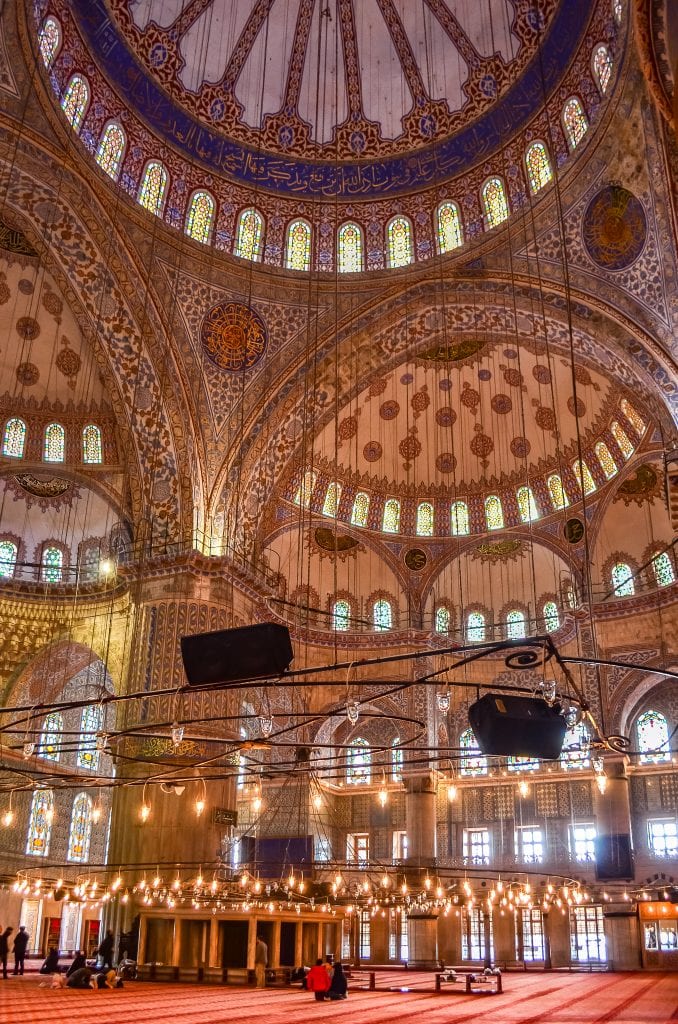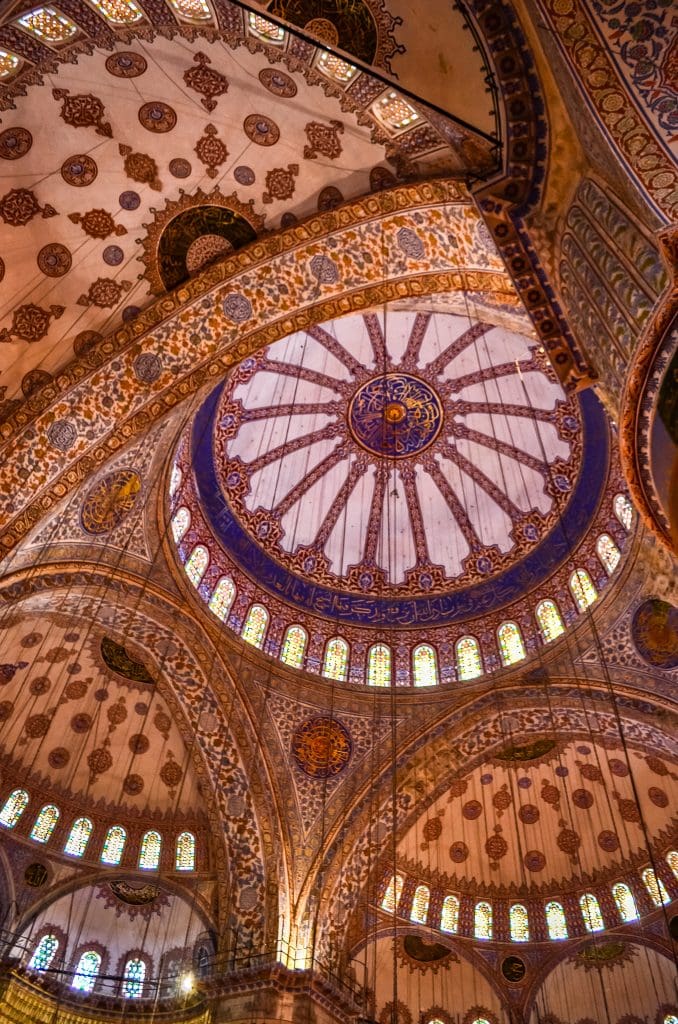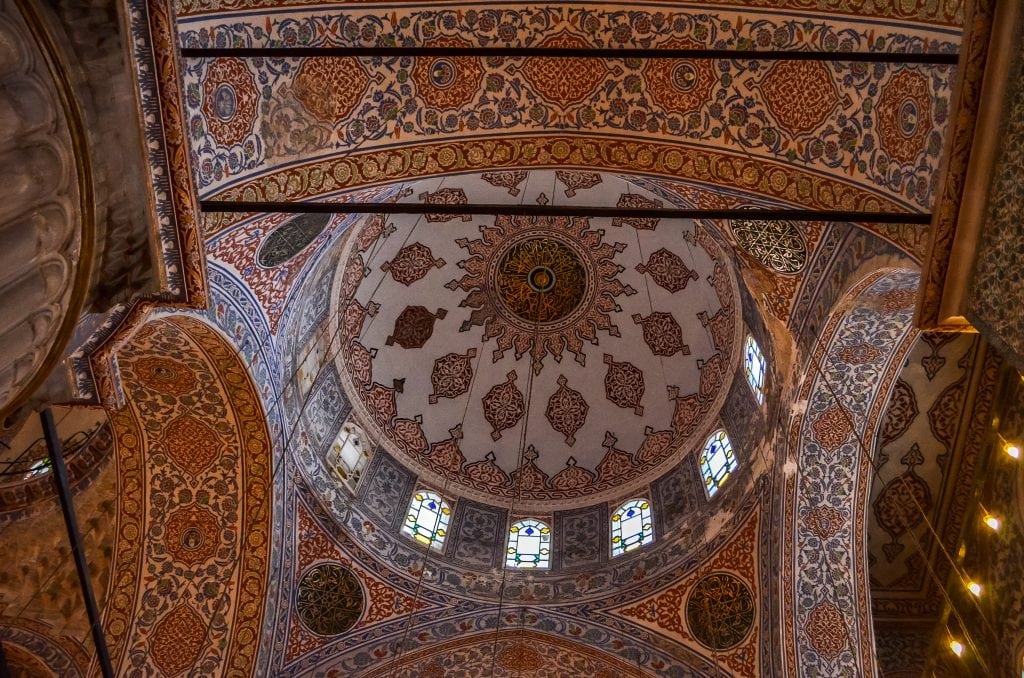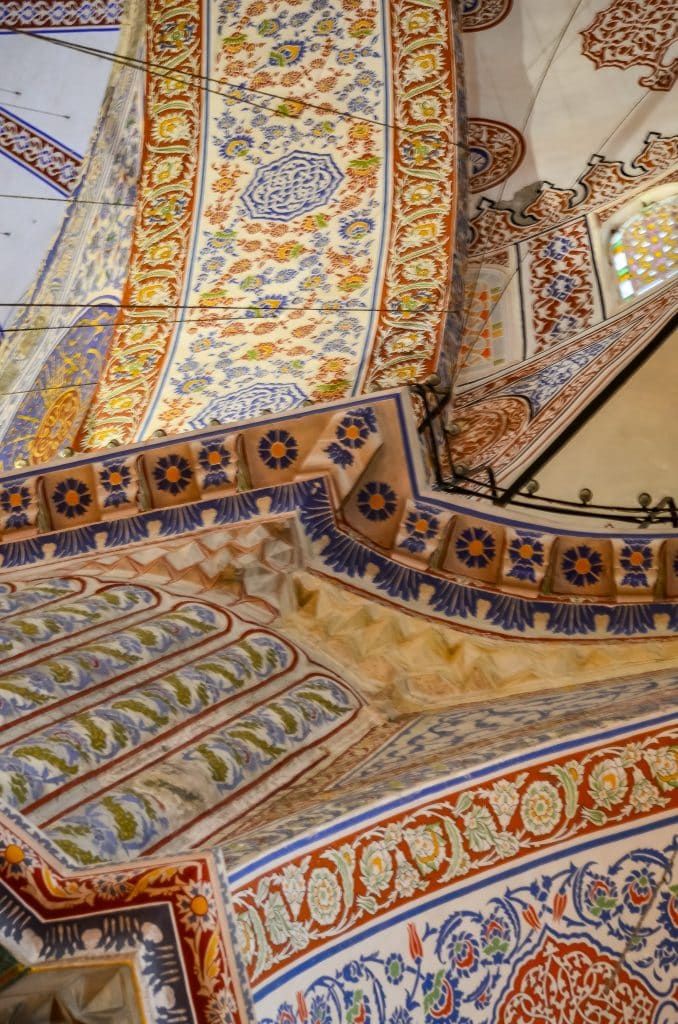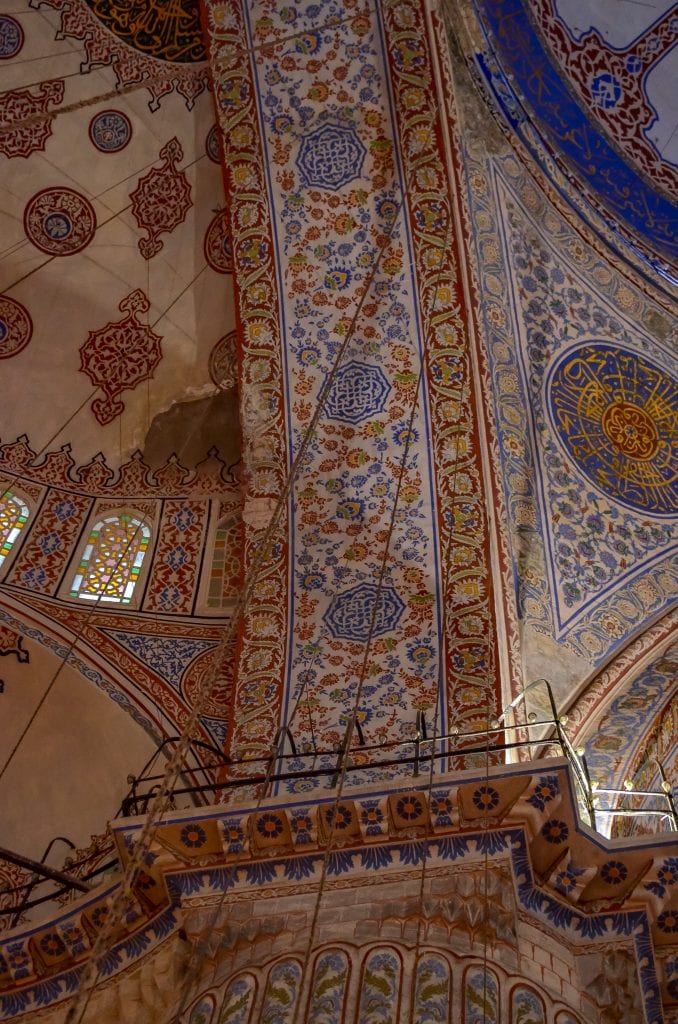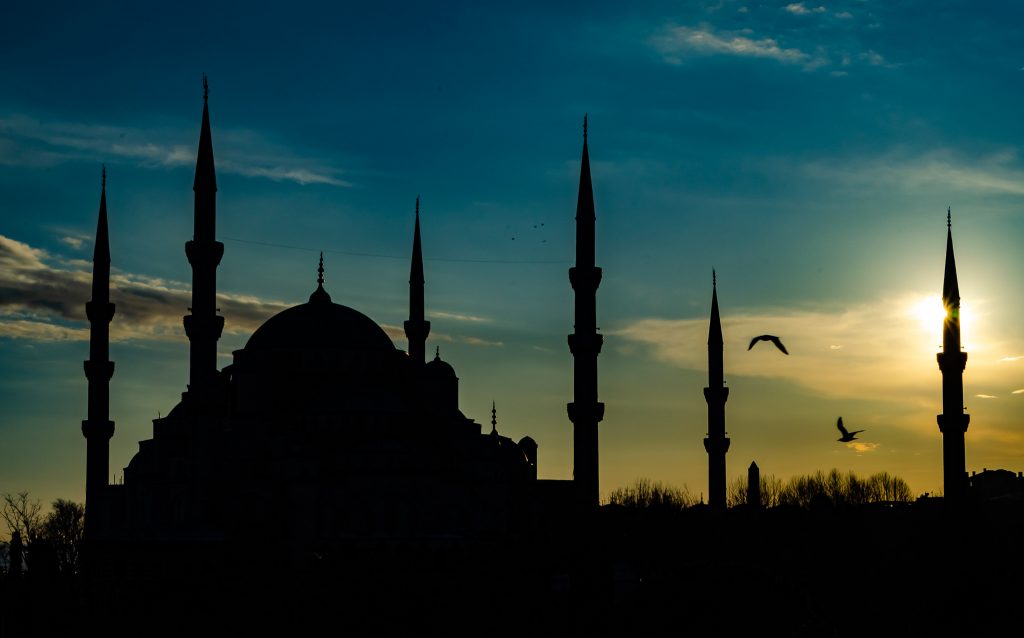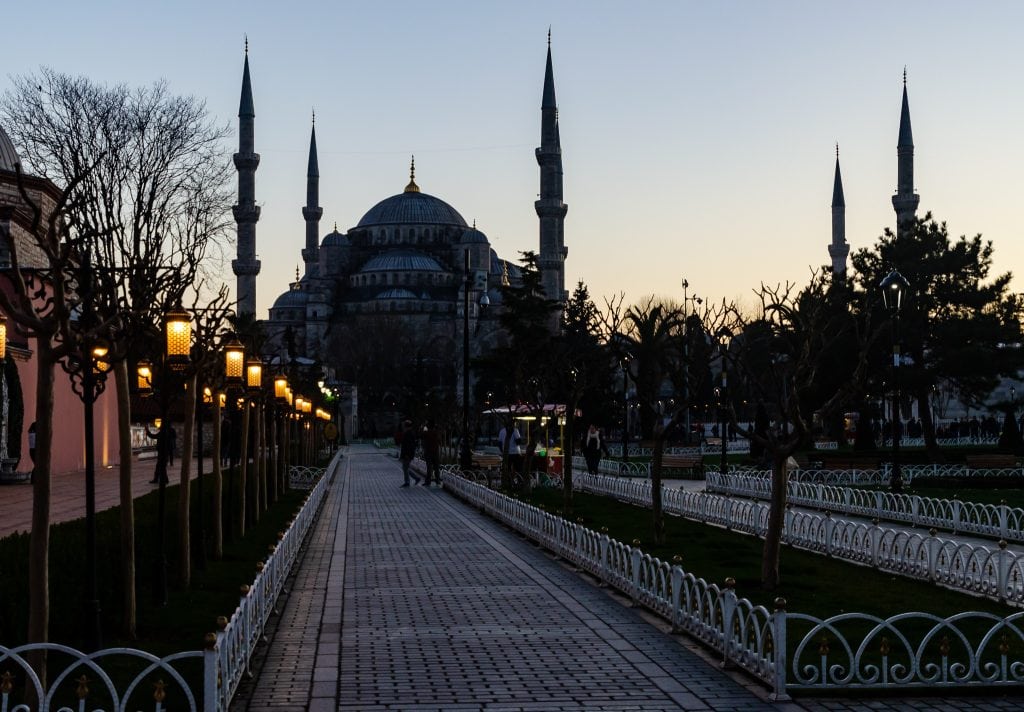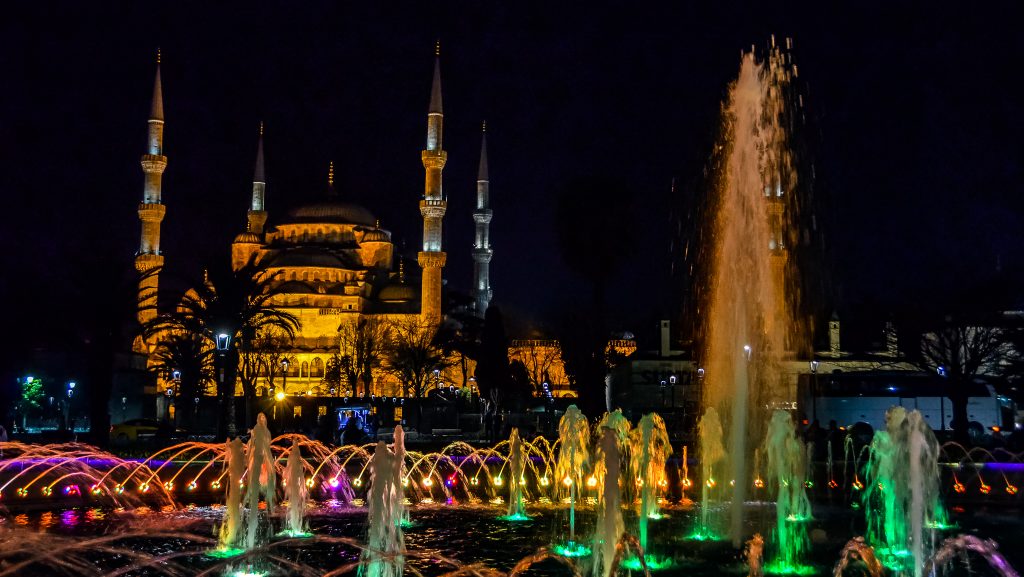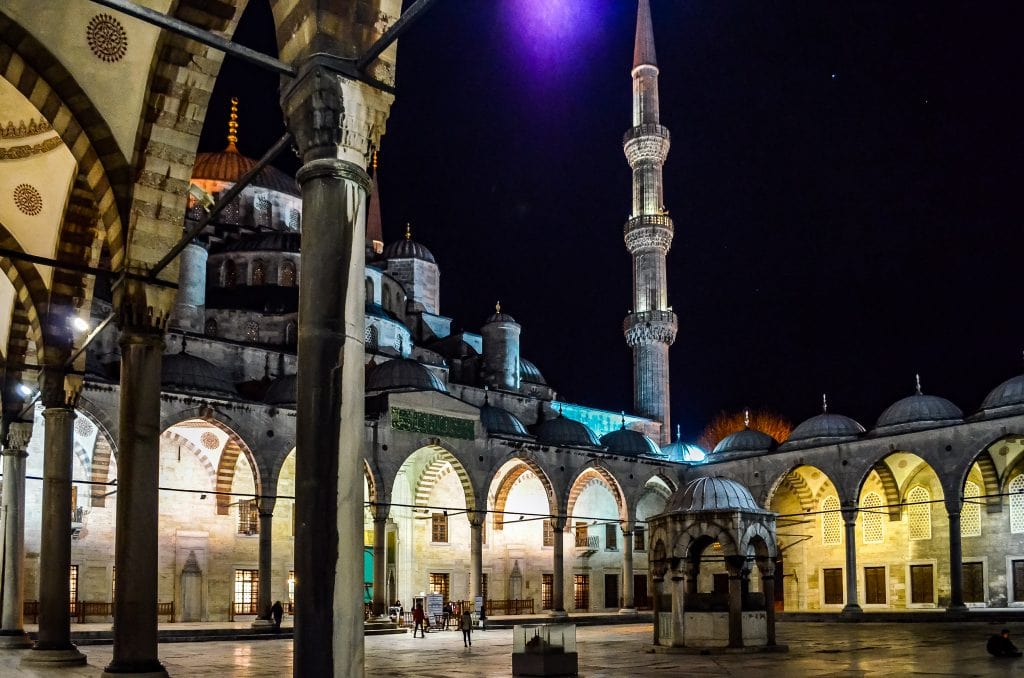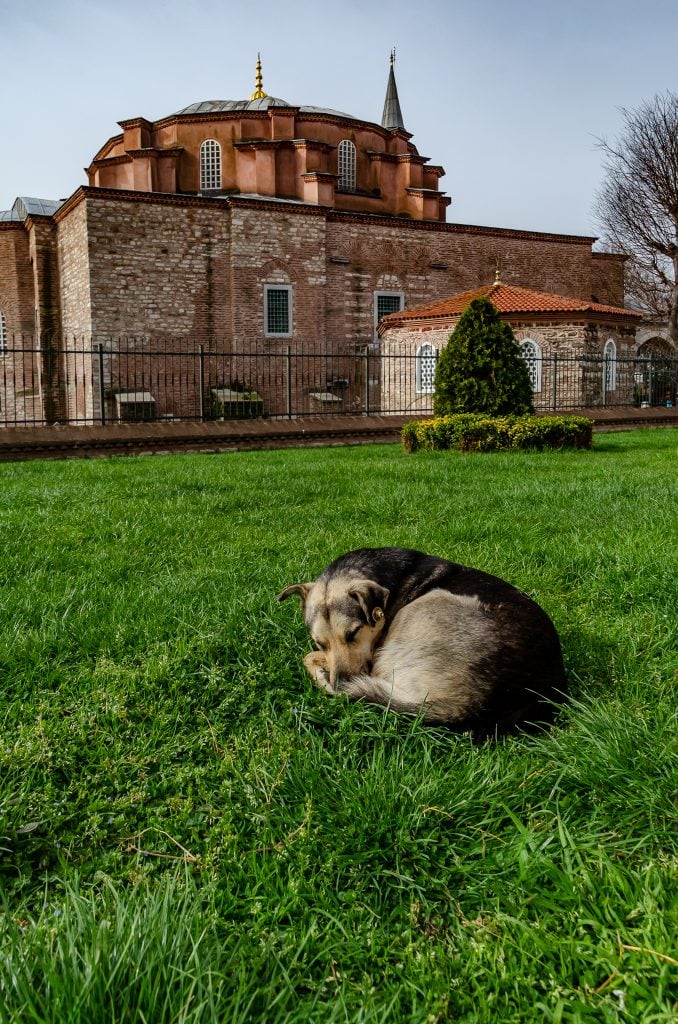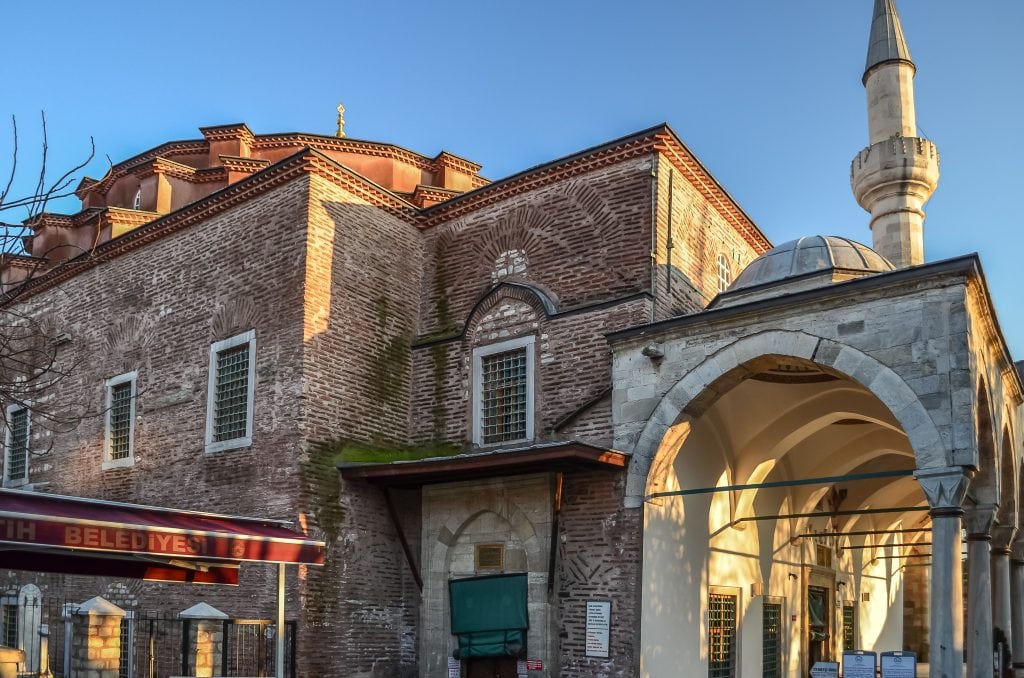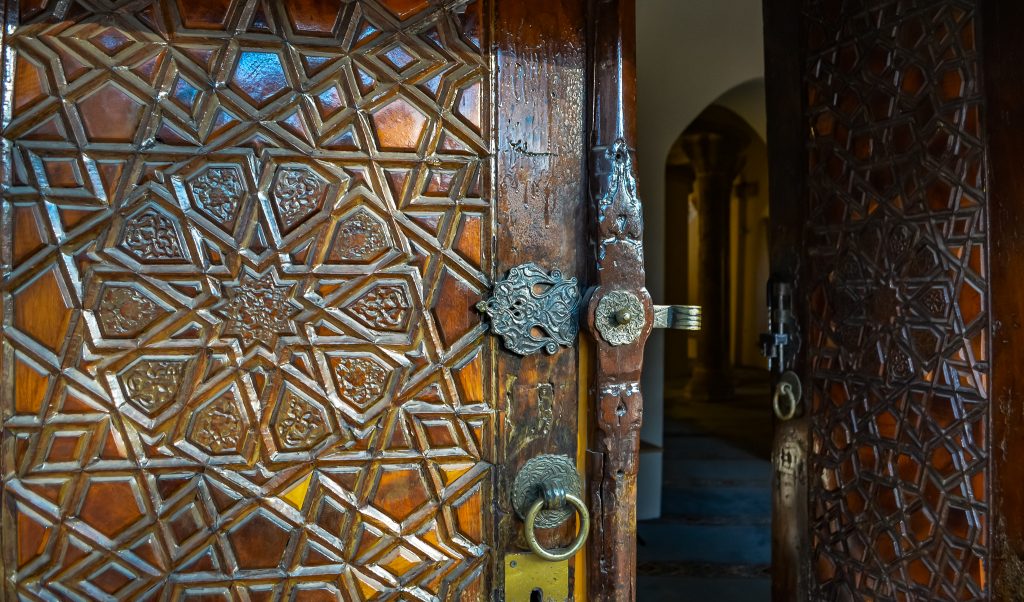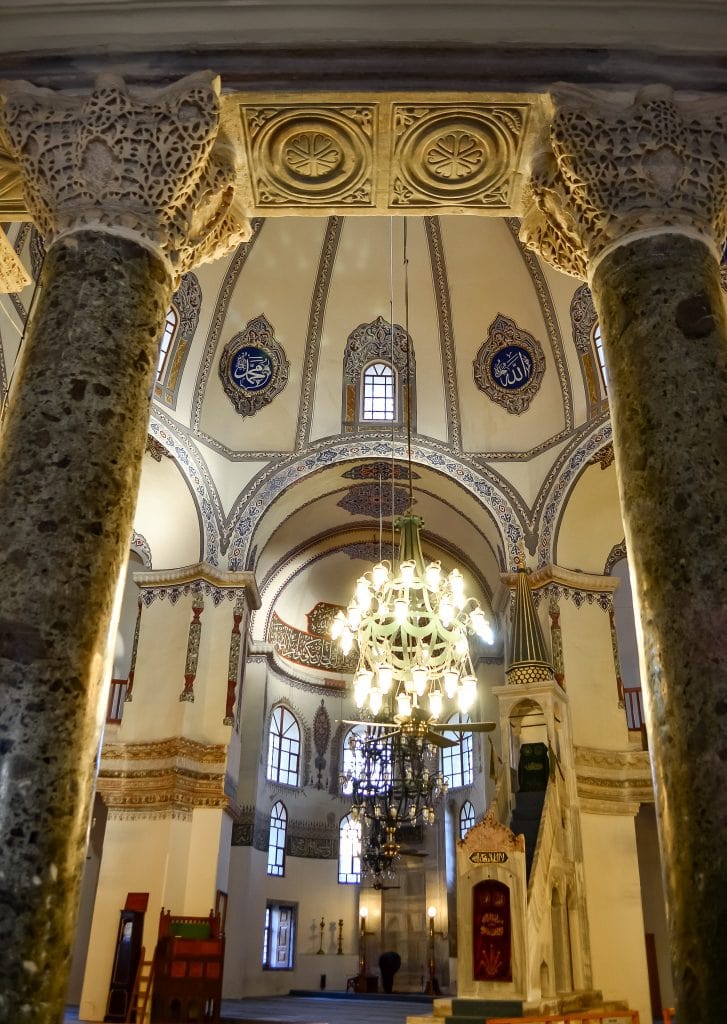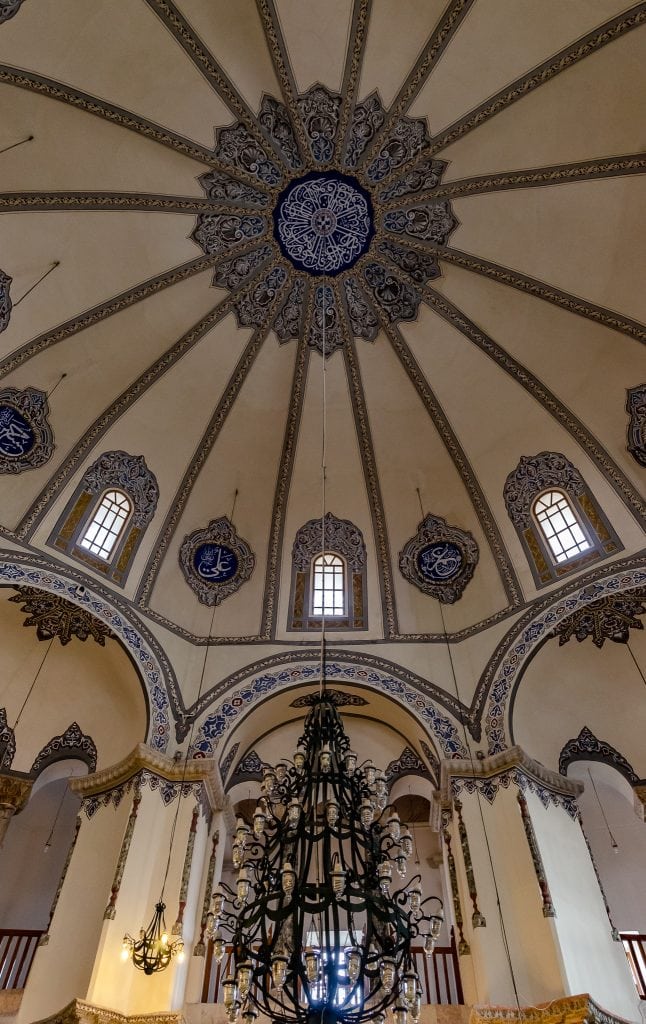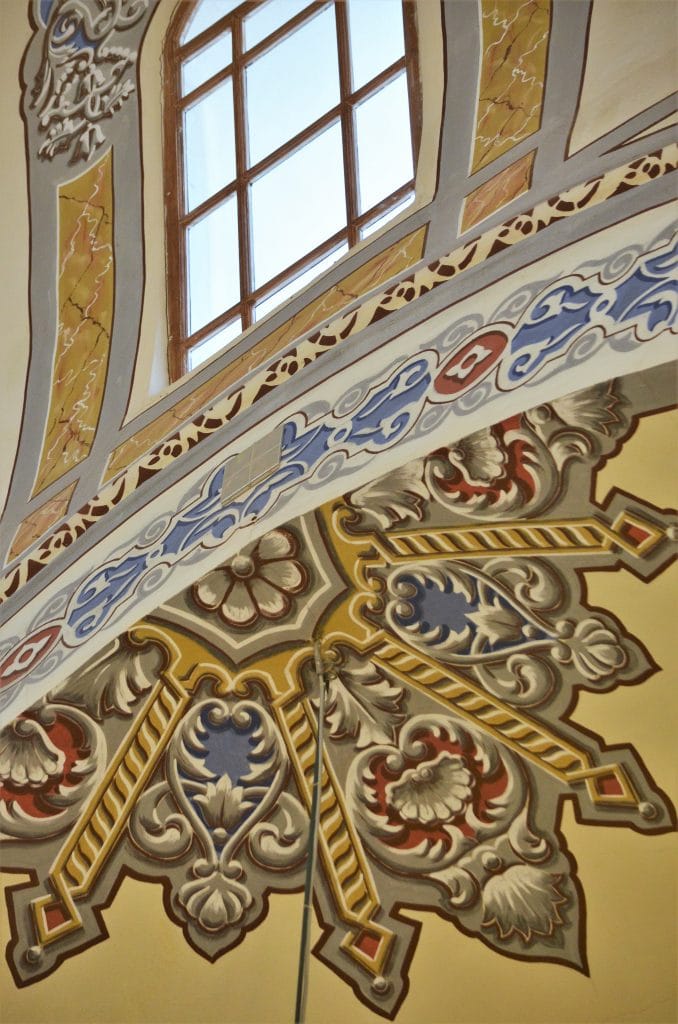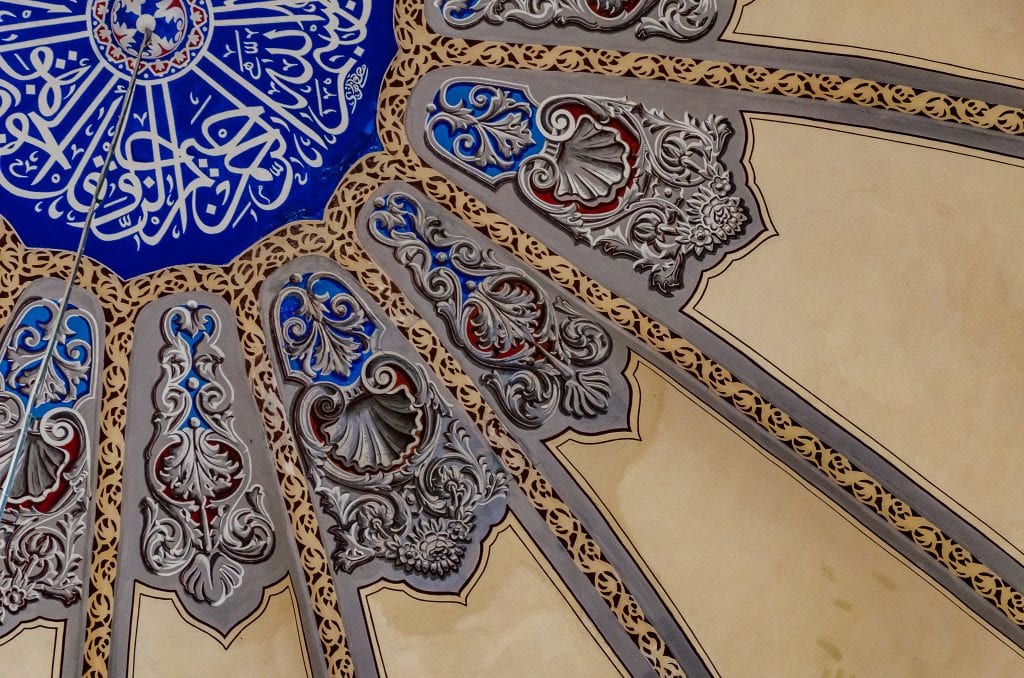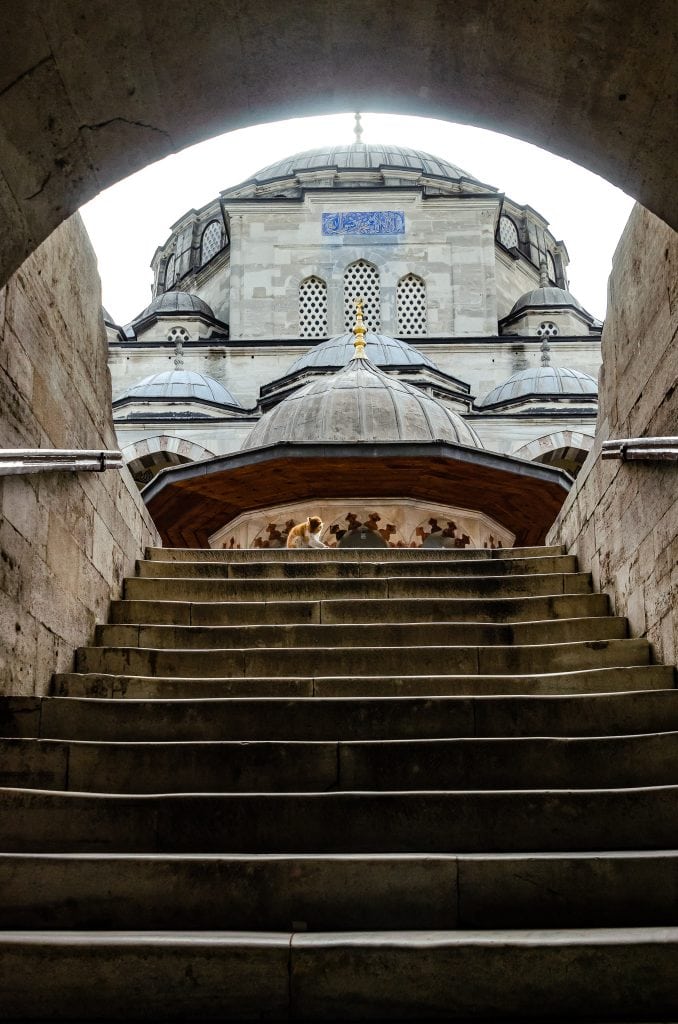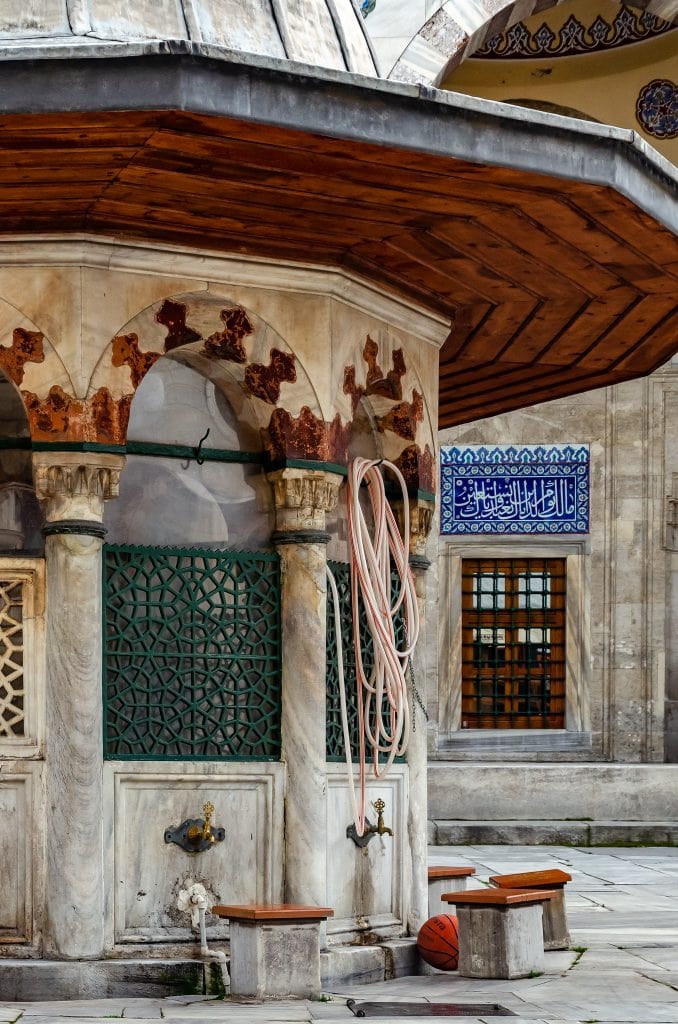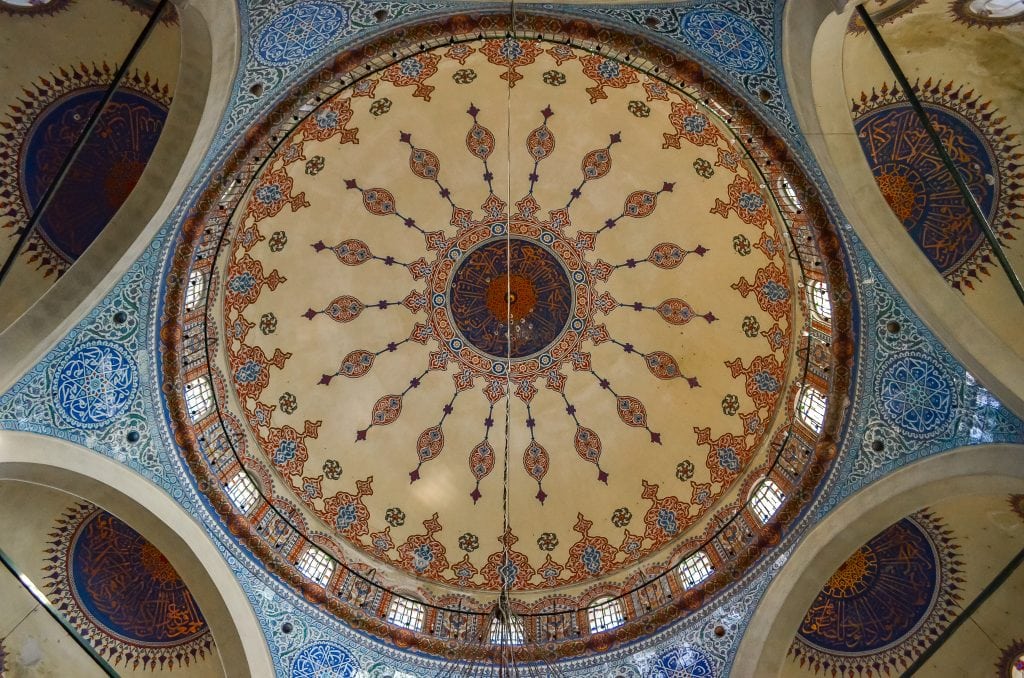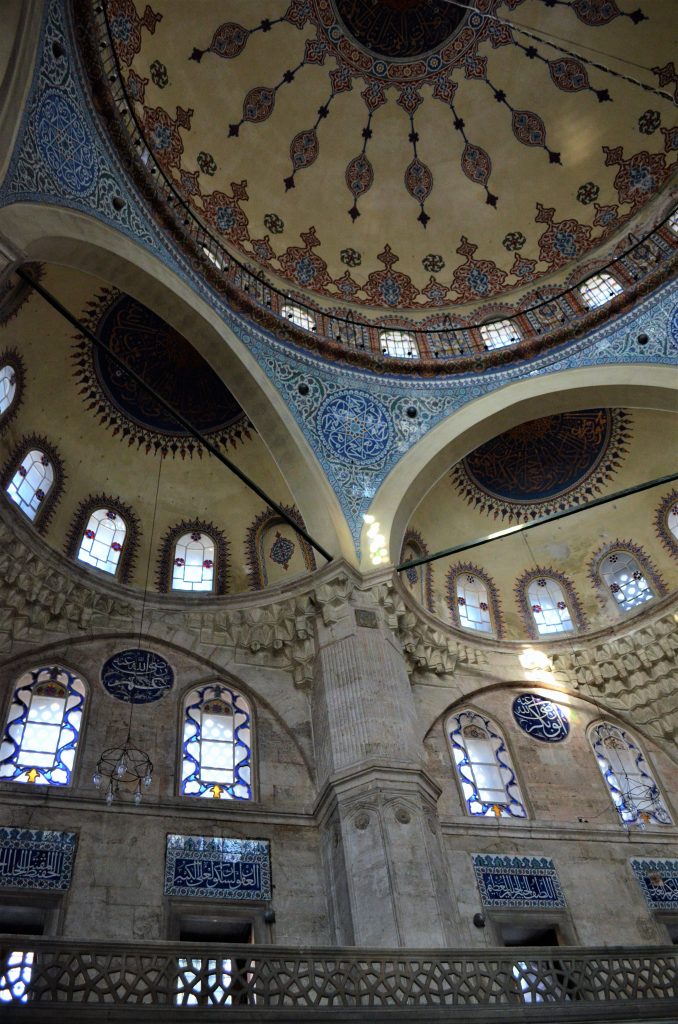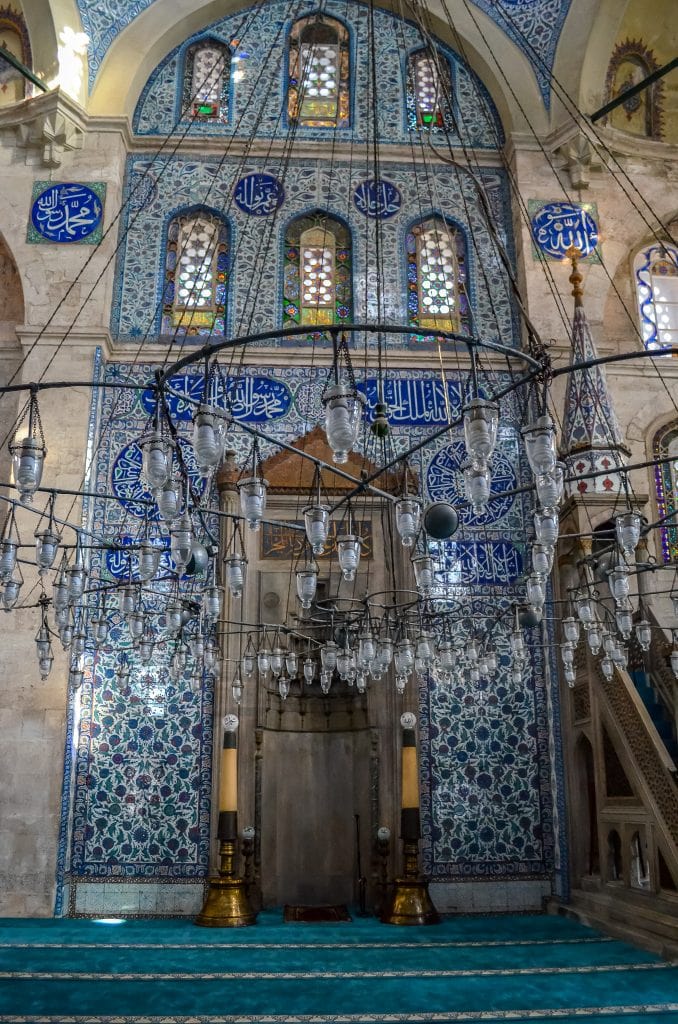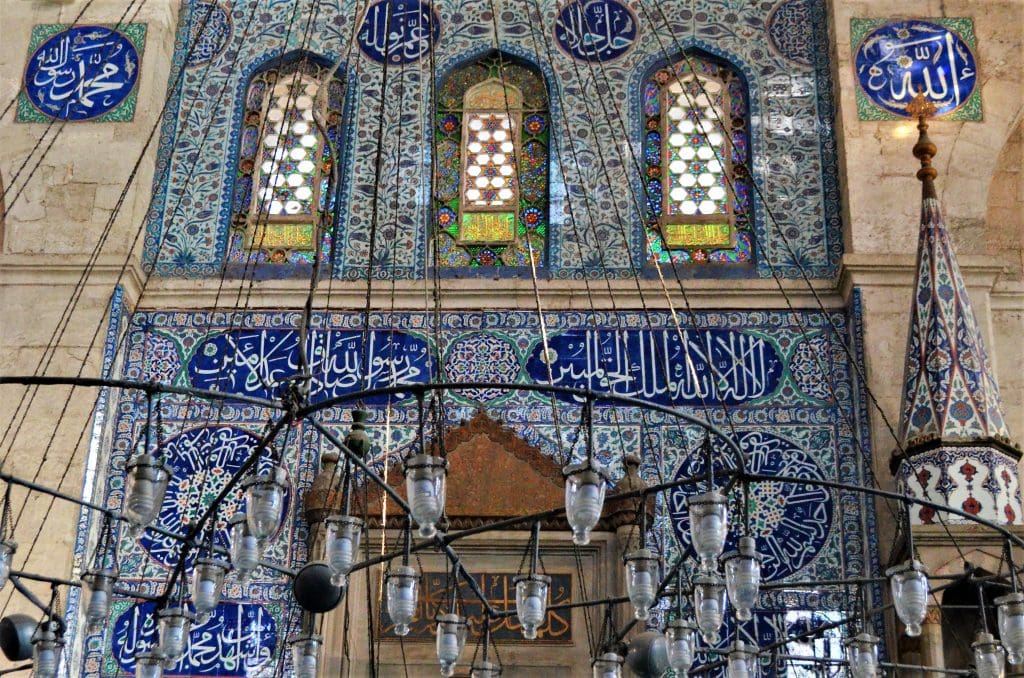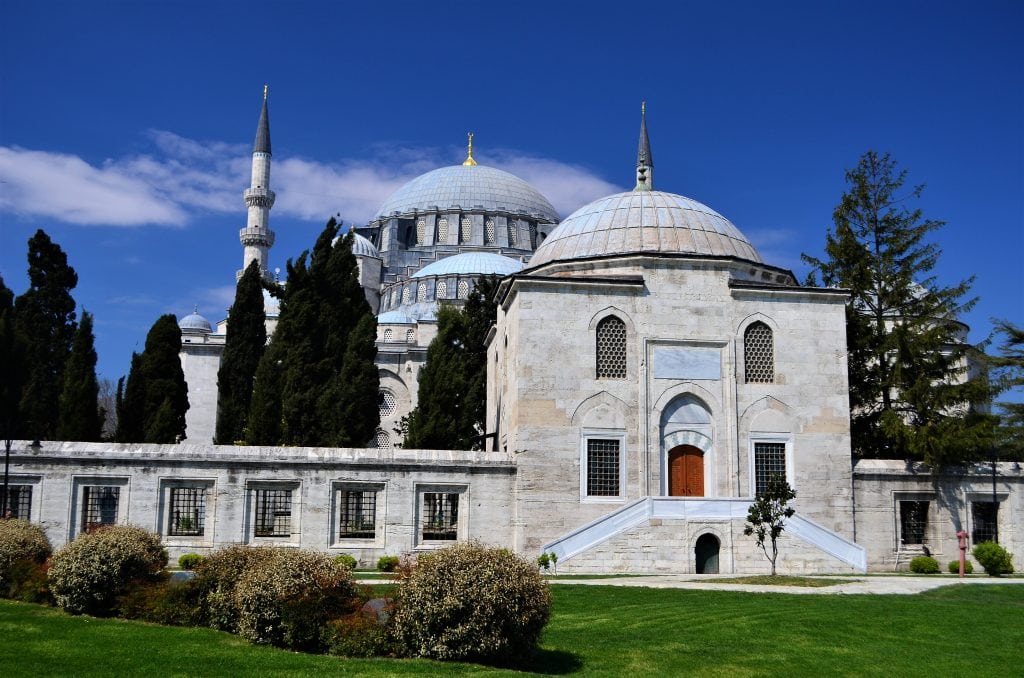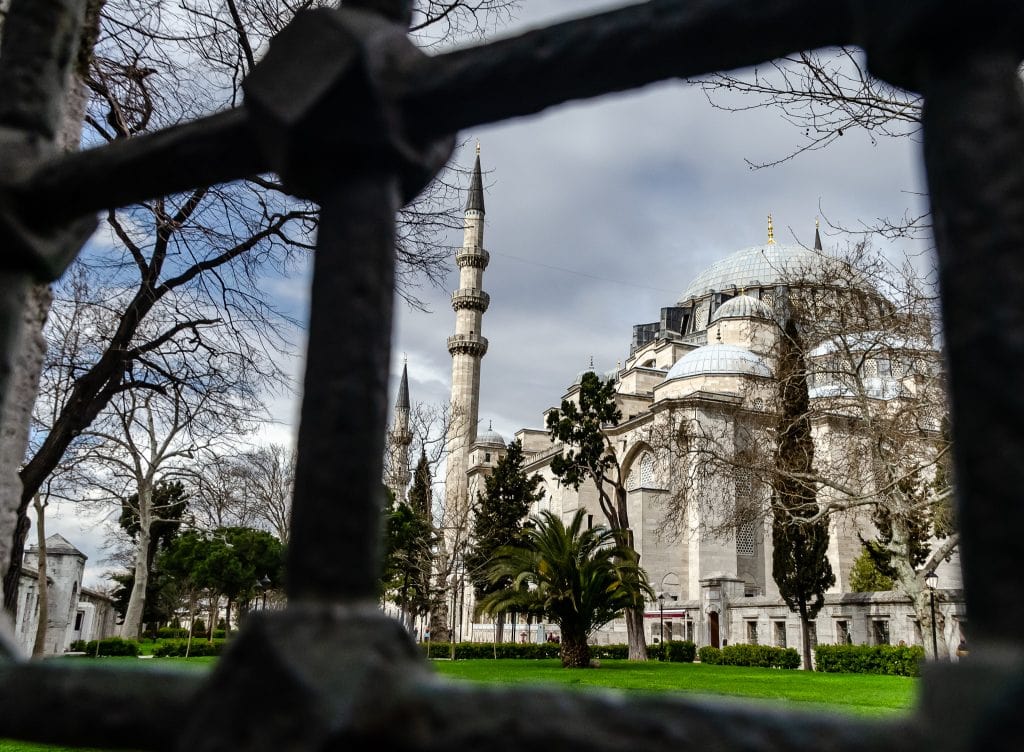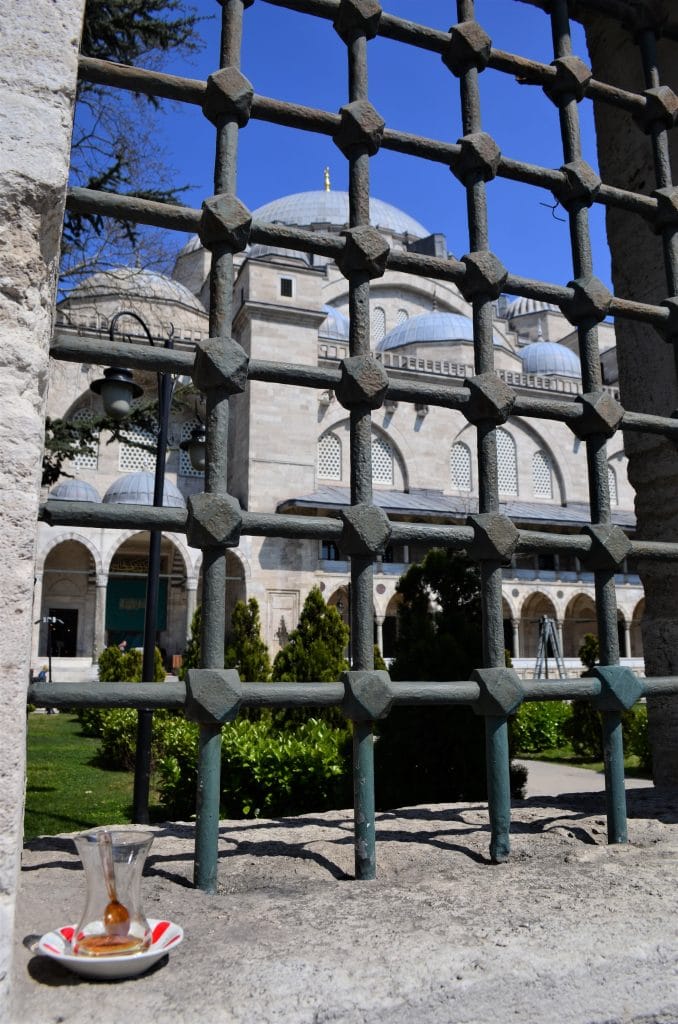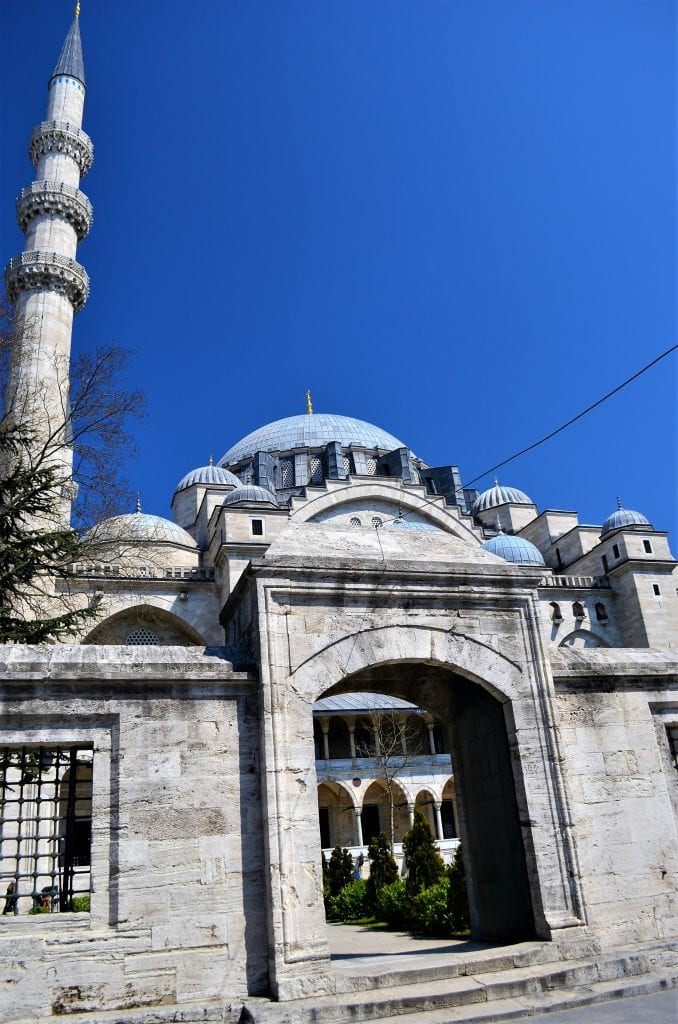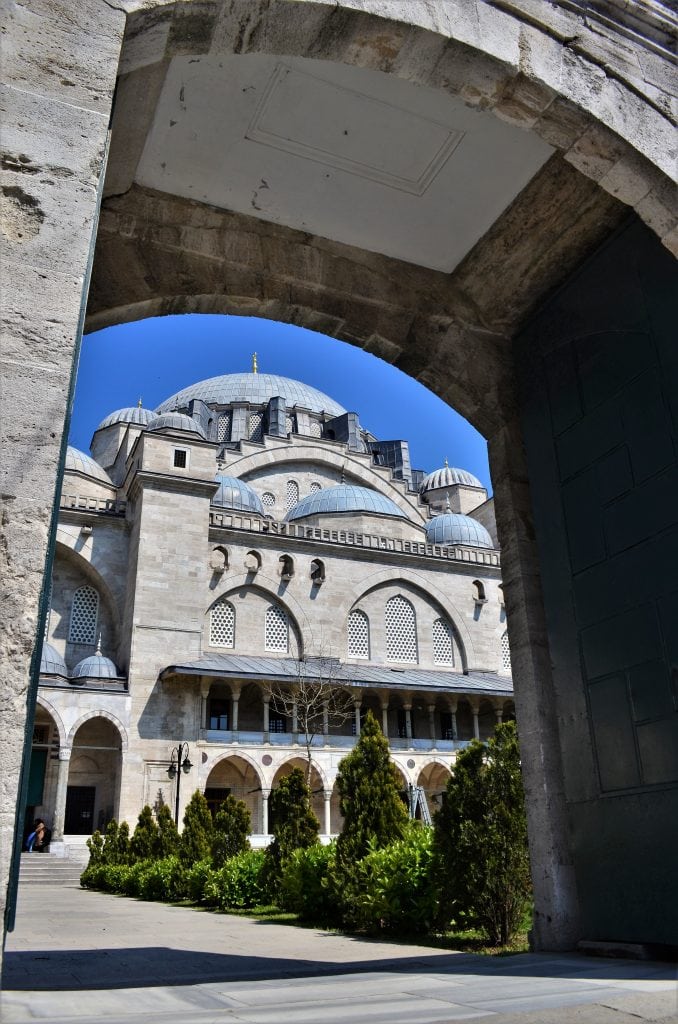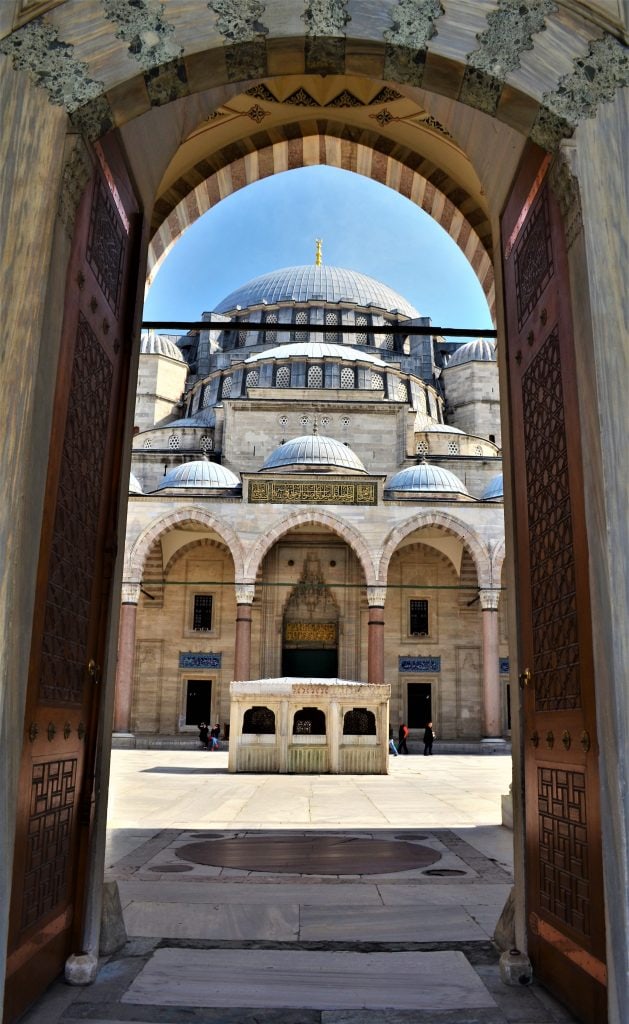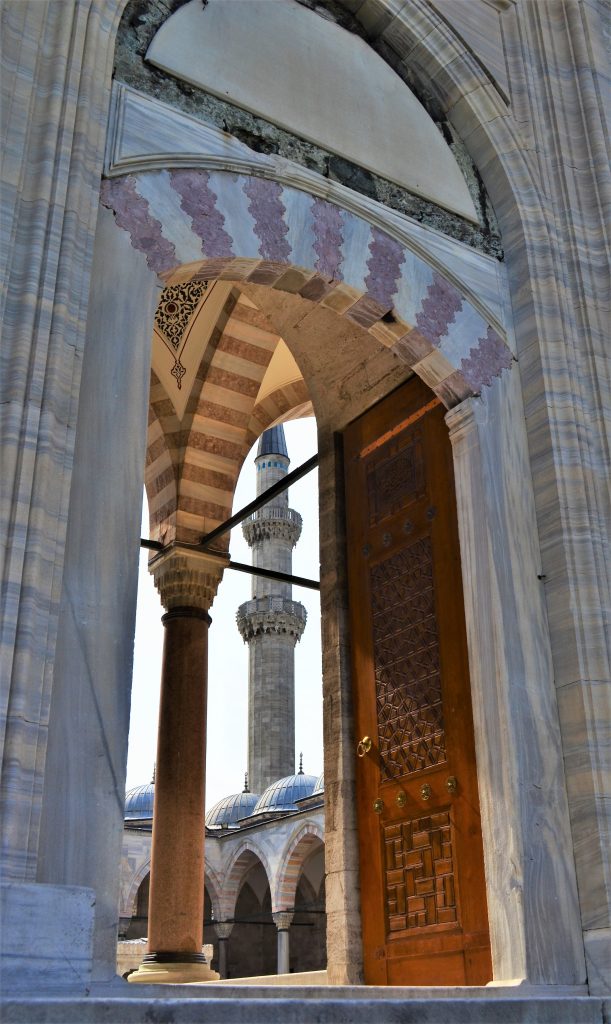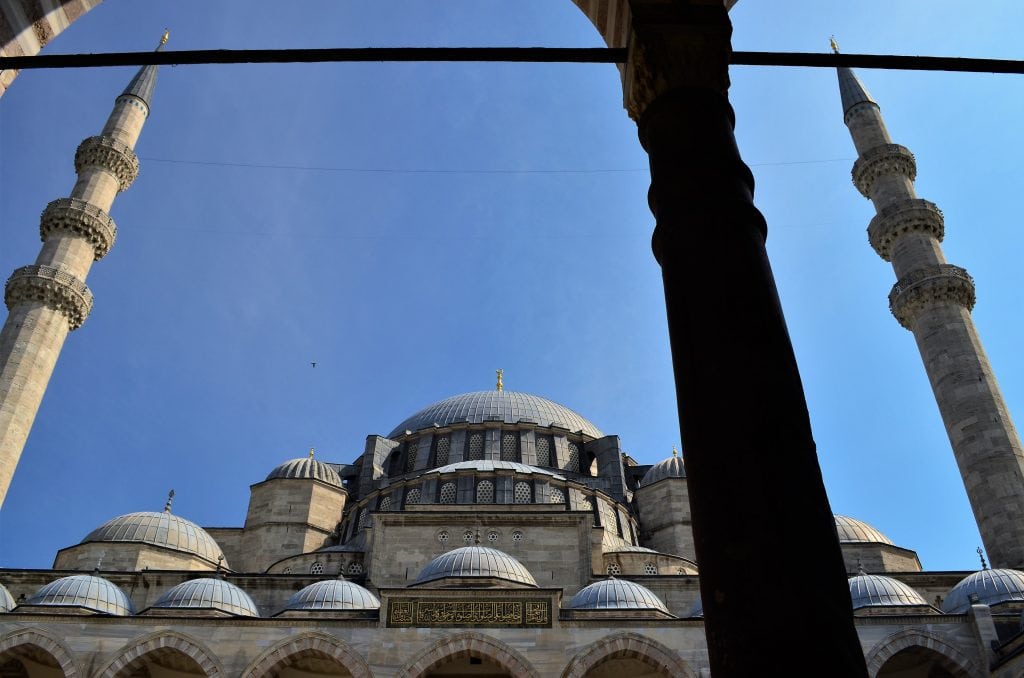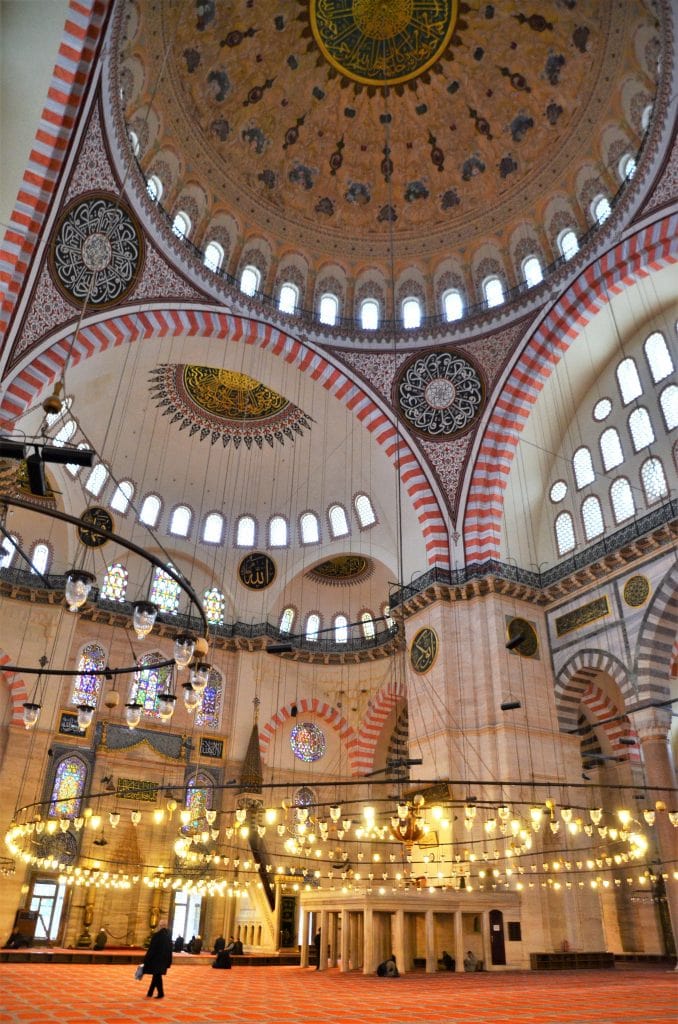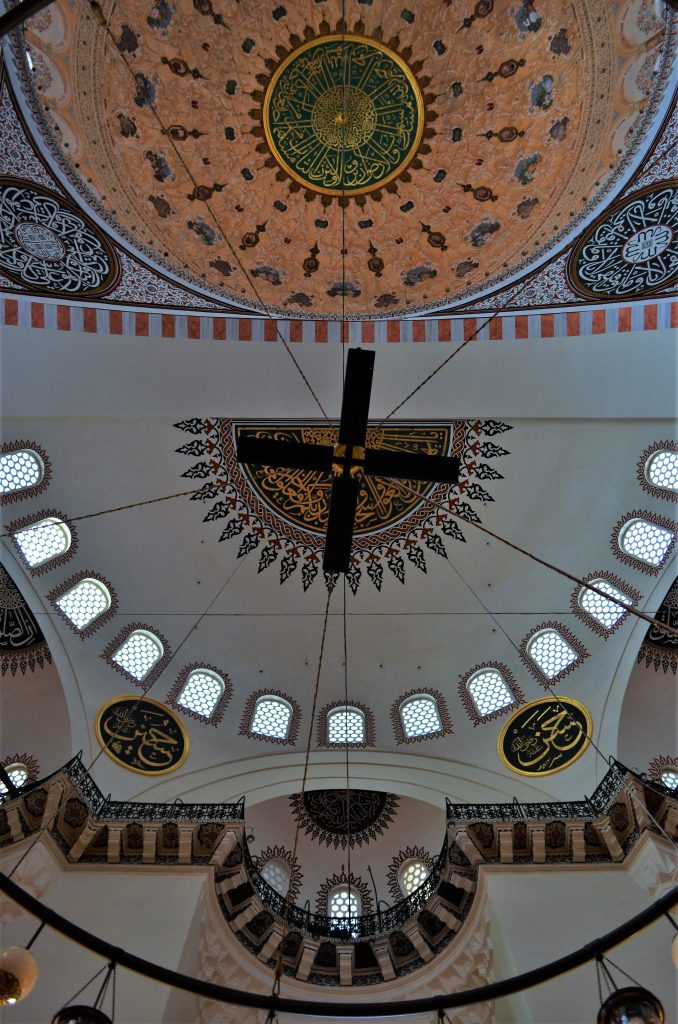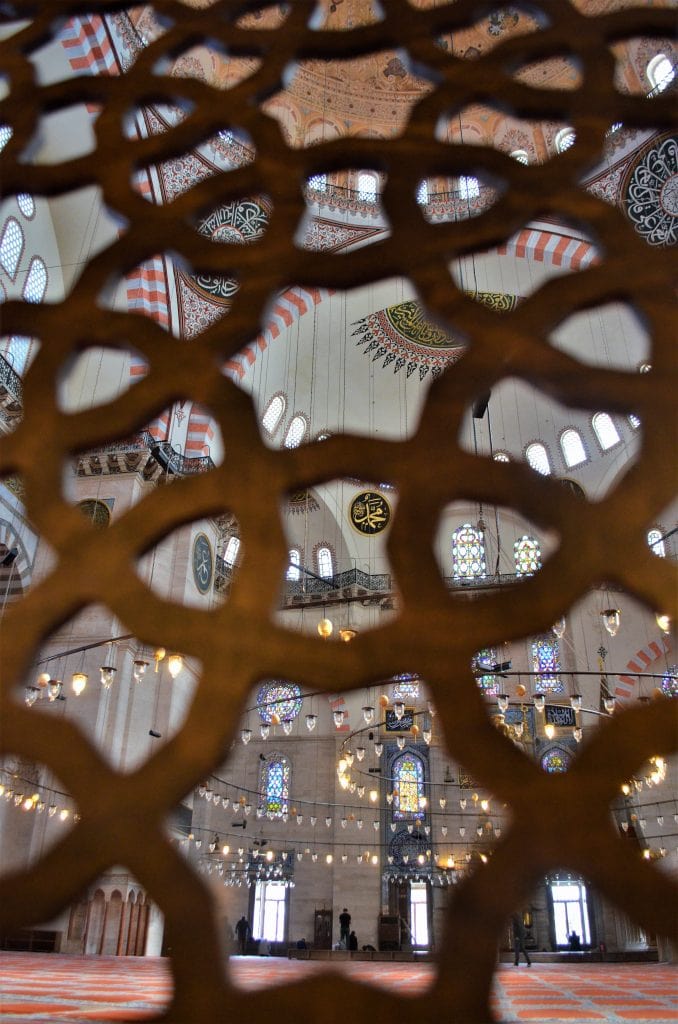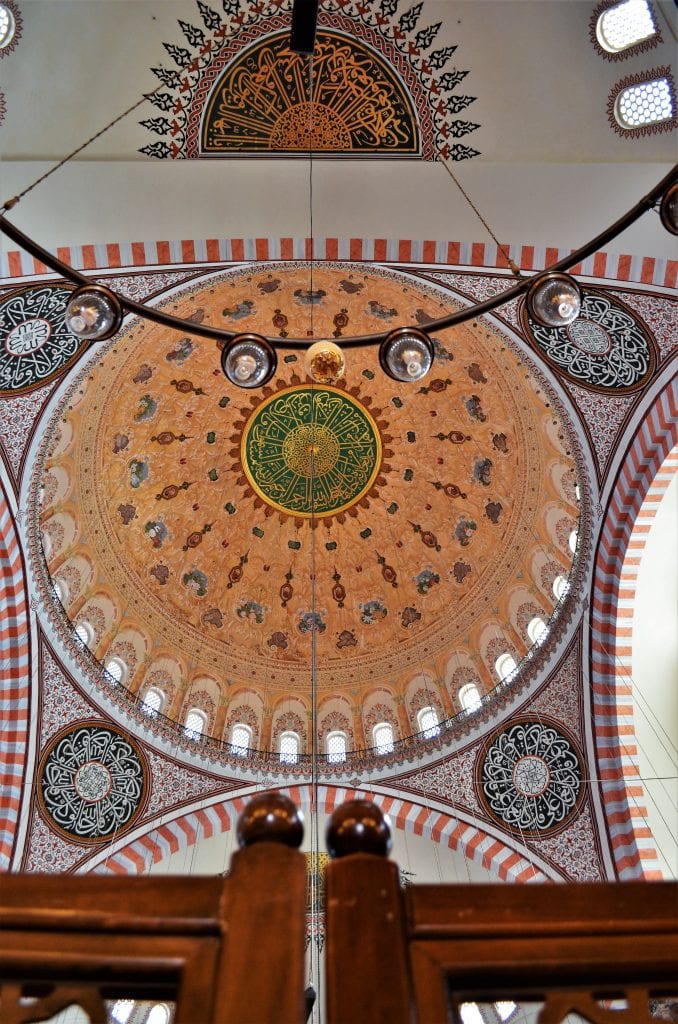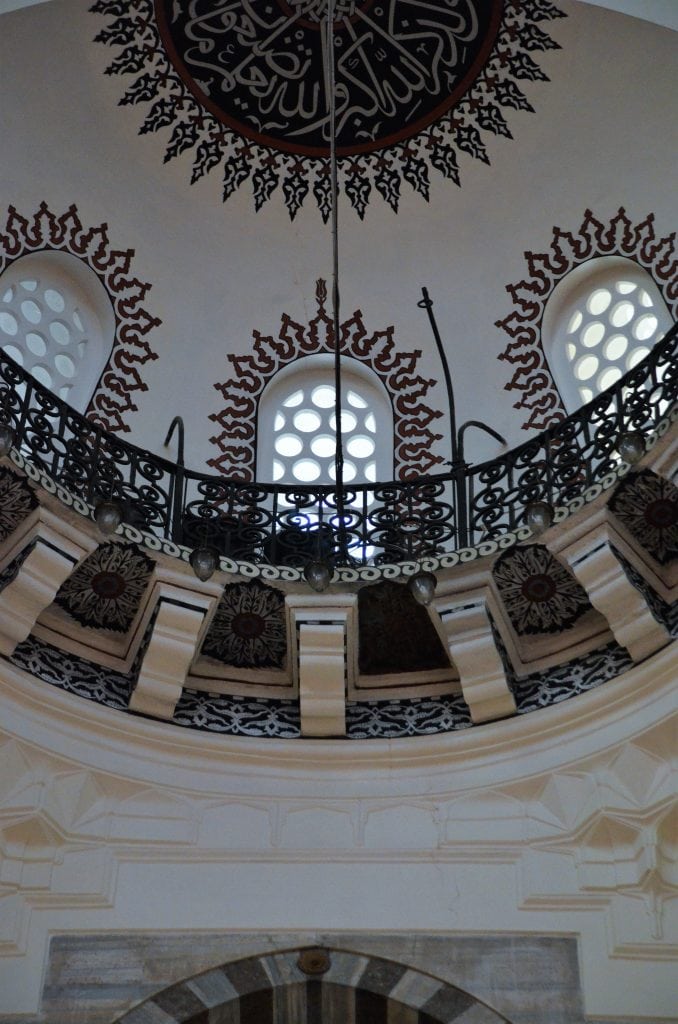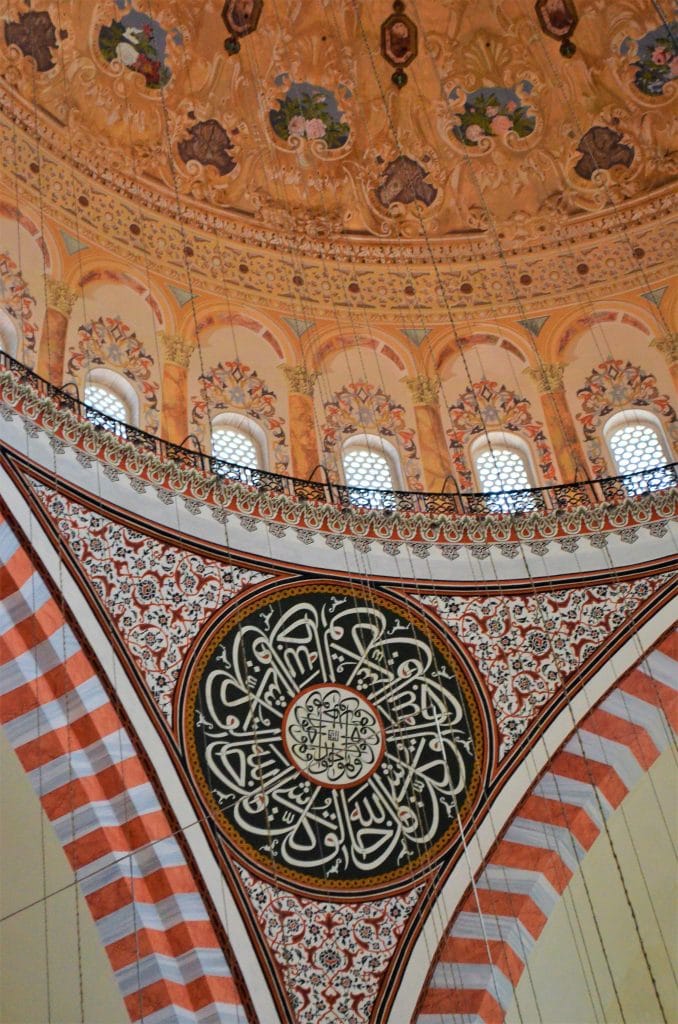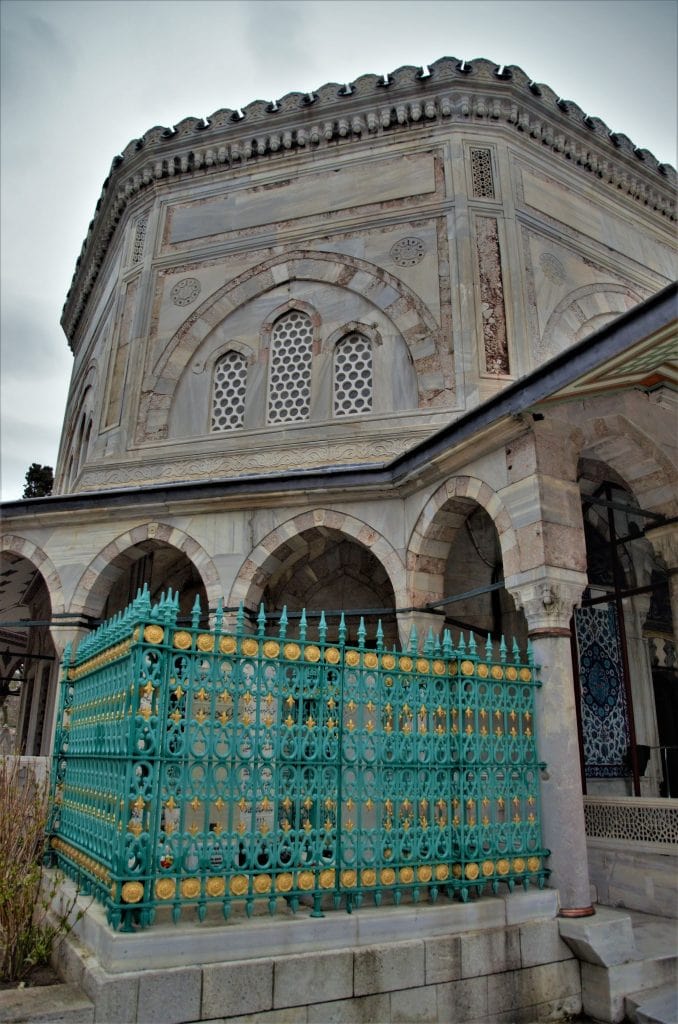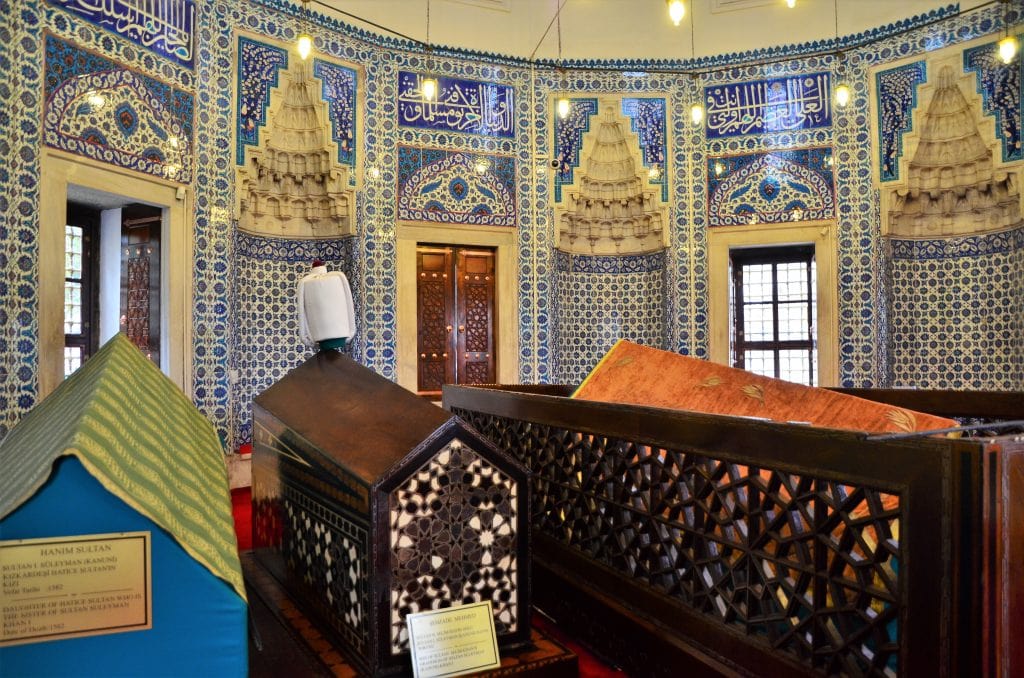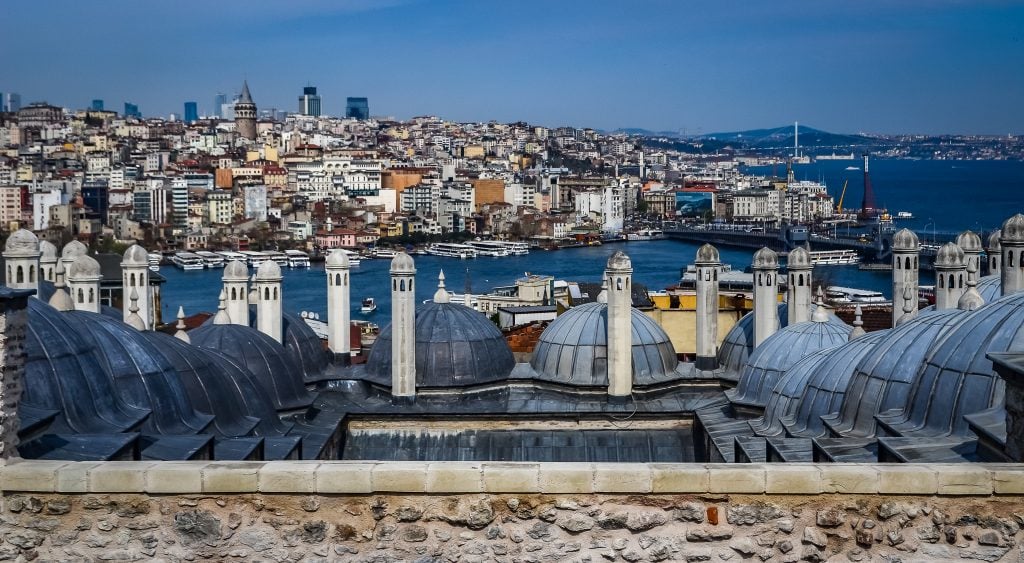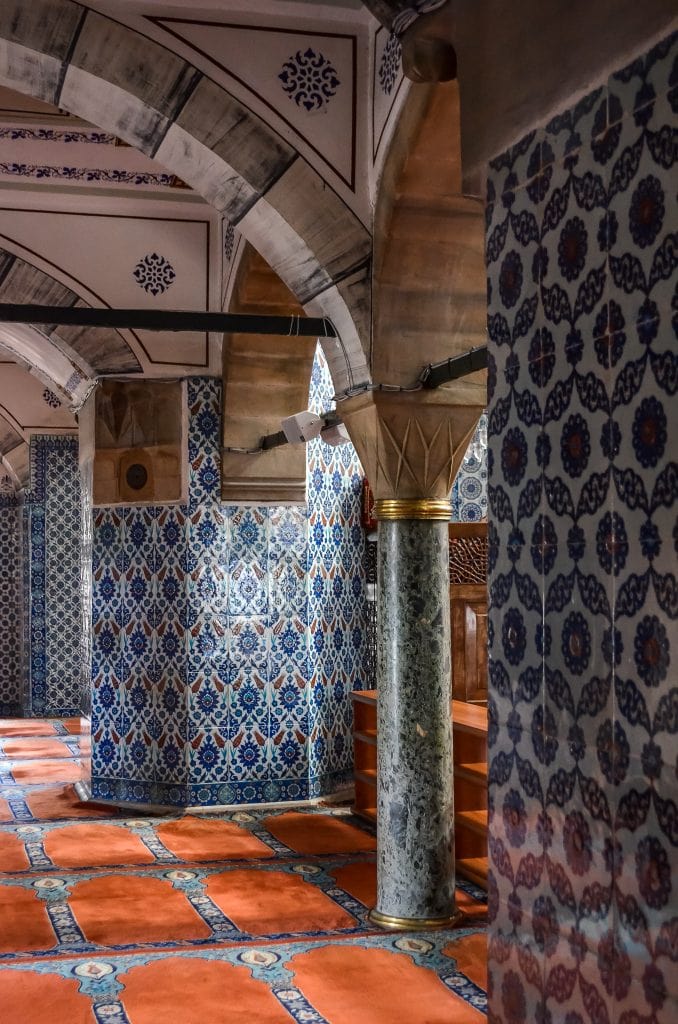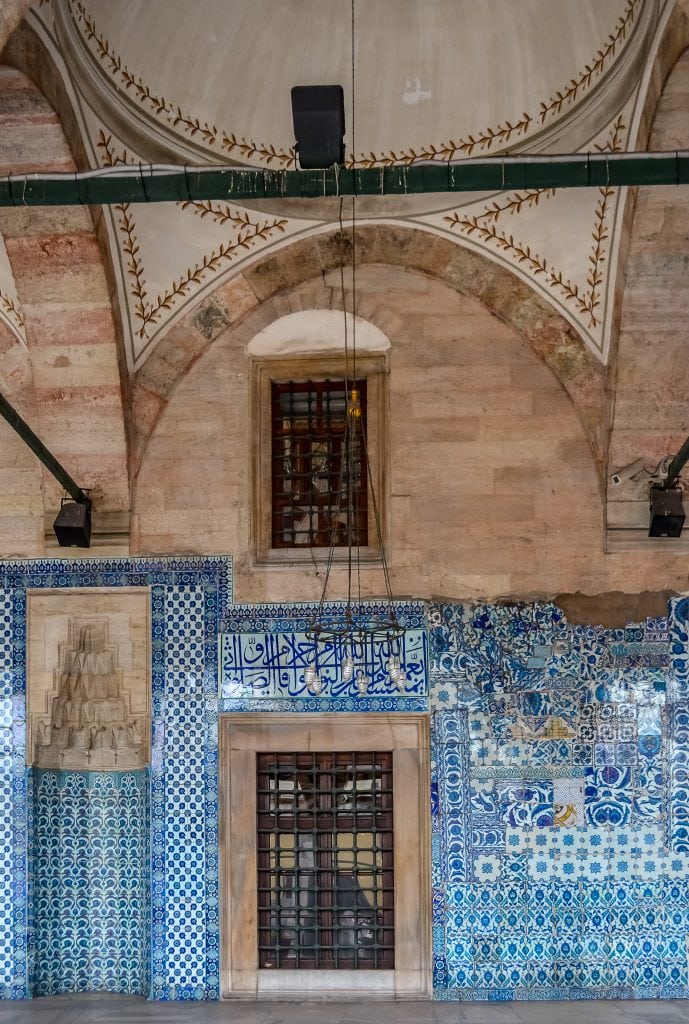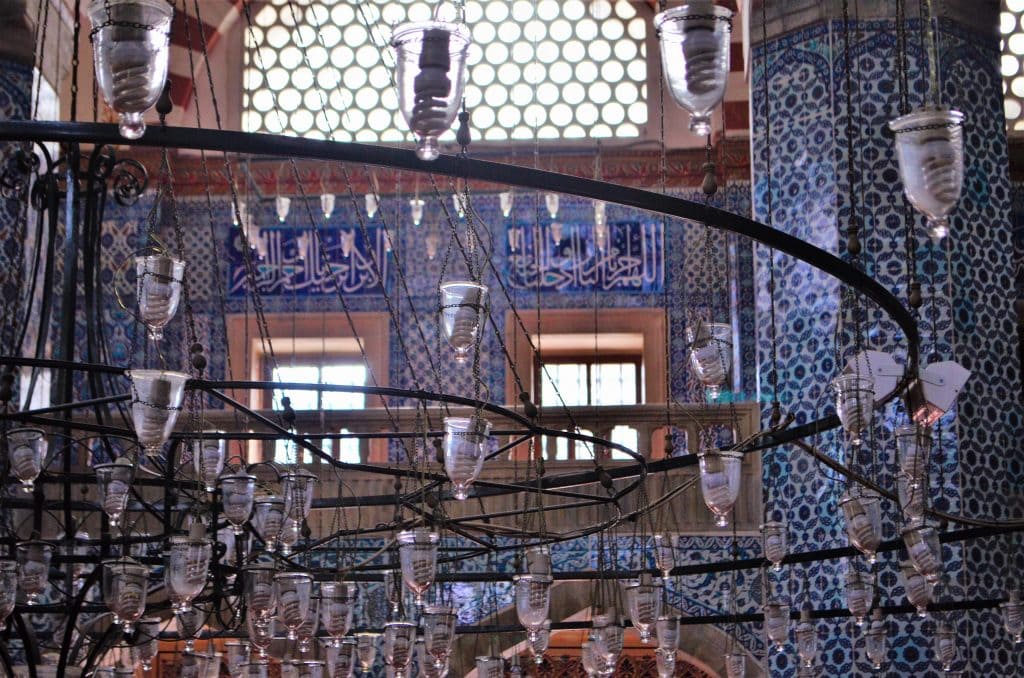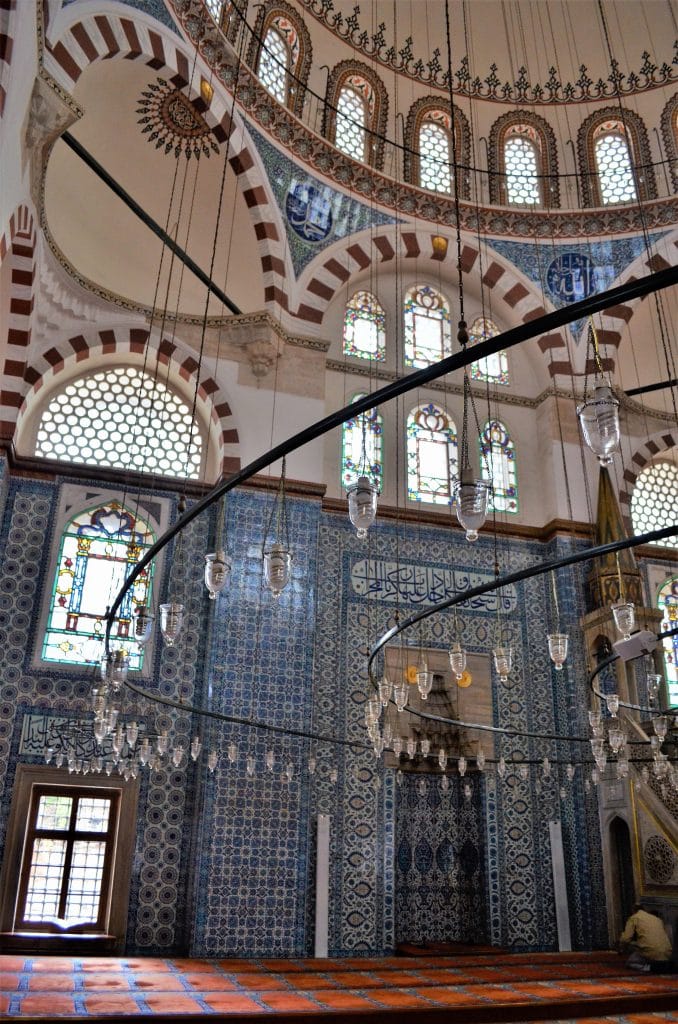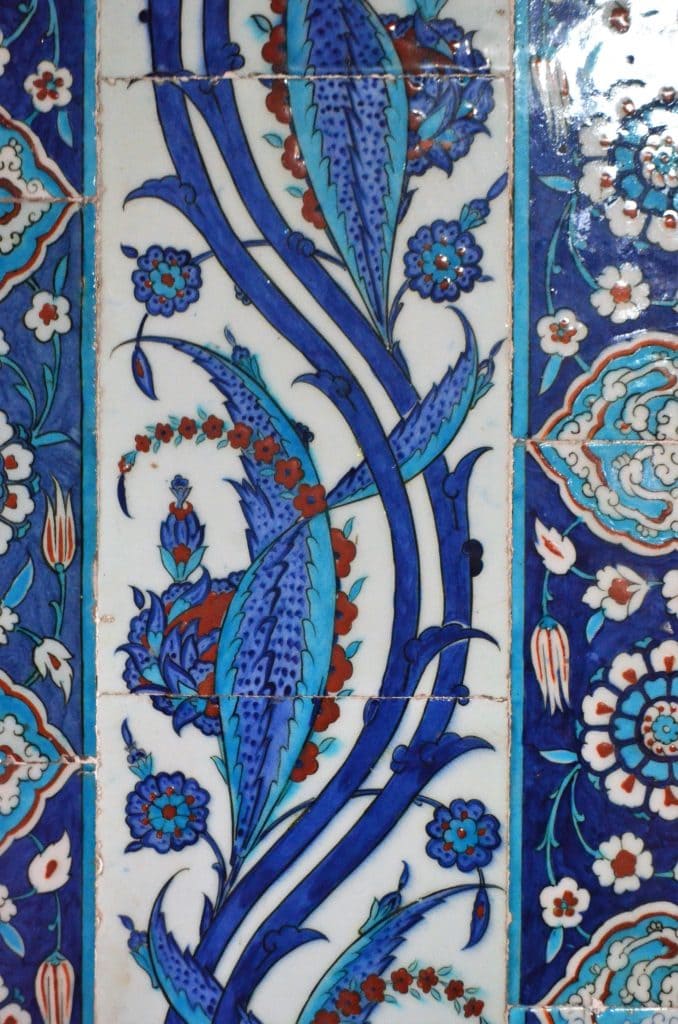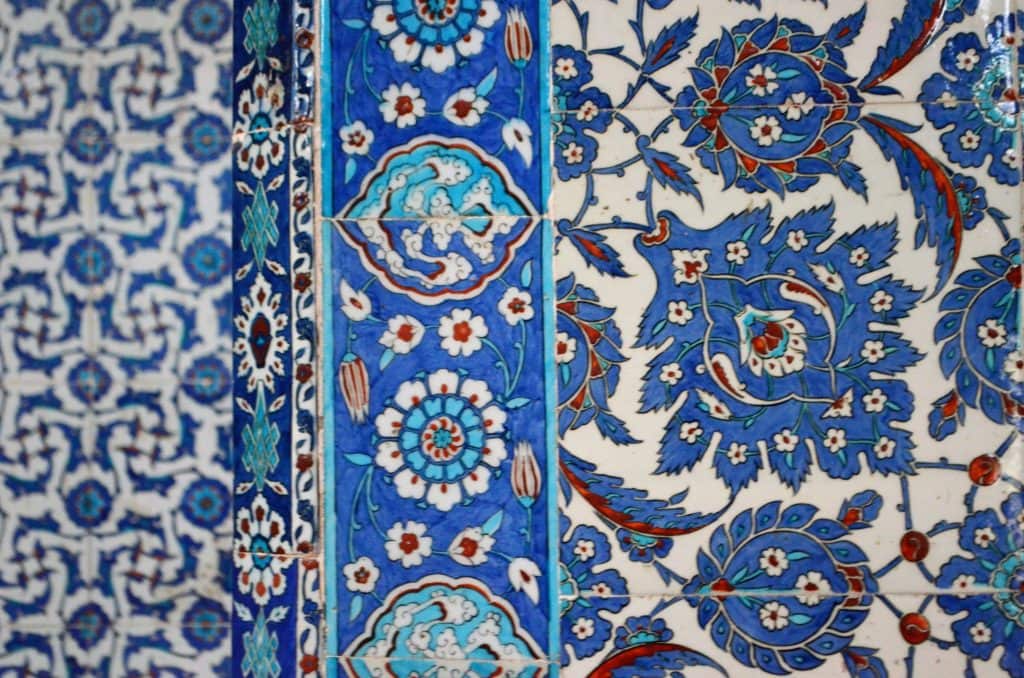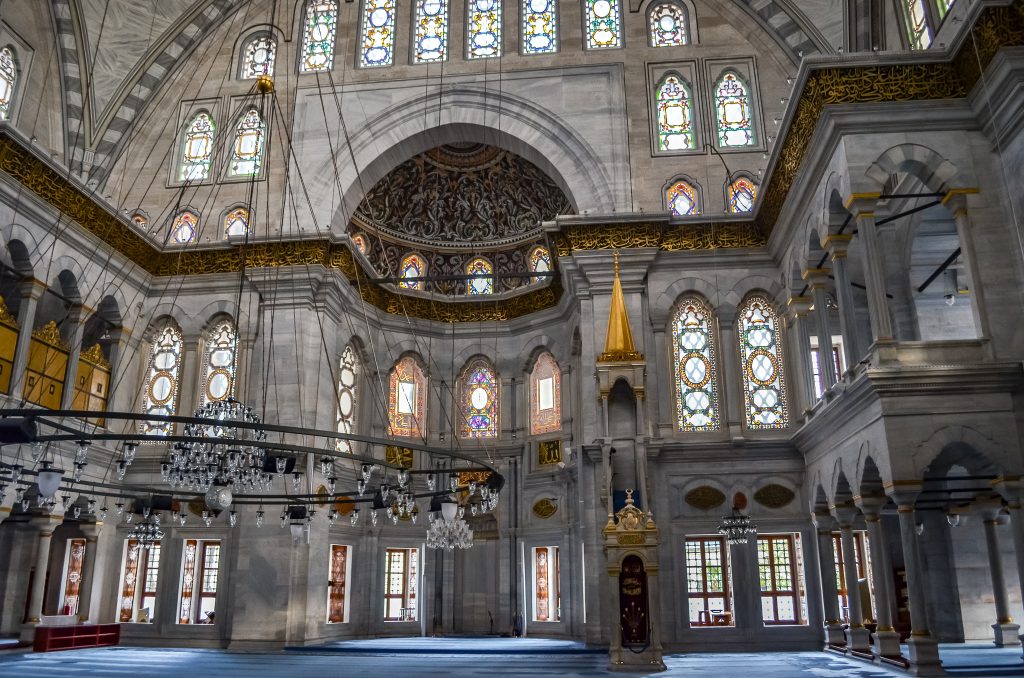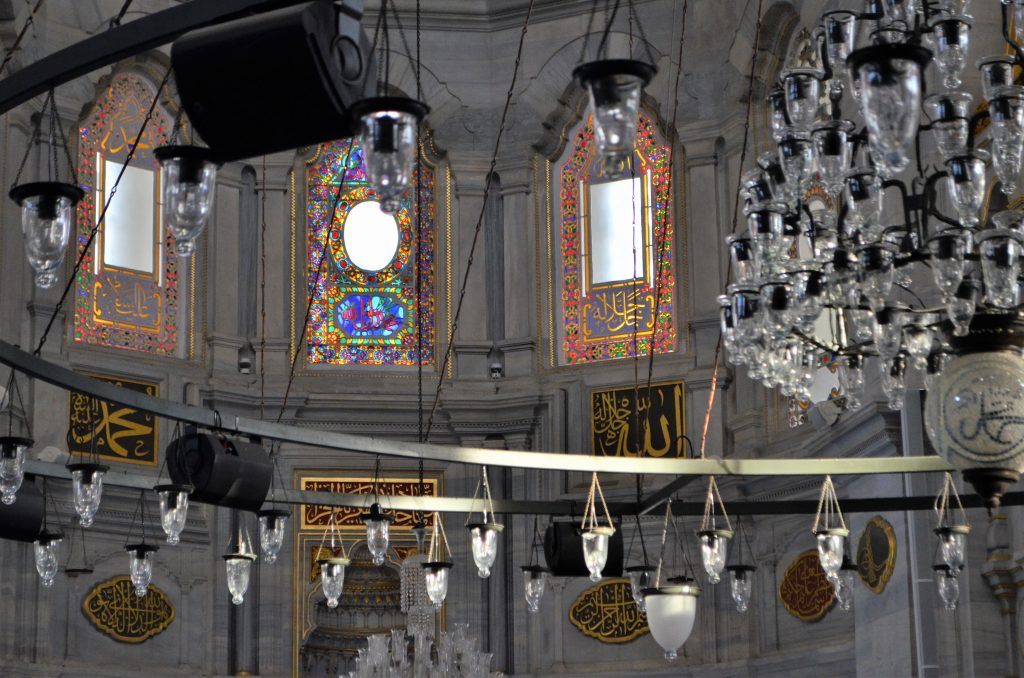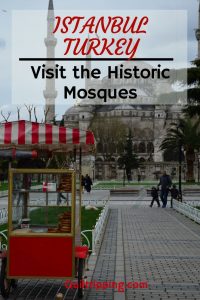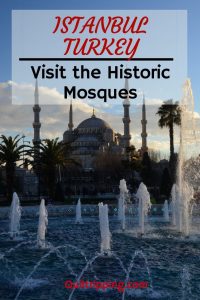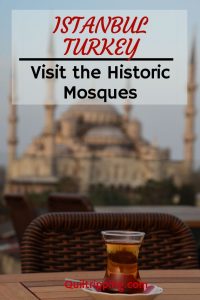Last Updated on 02/19/22 by Rose Palmer
Not all of the mosques in Istanbul are open to non Muslim visitors. But fortunately, the most beautiful and famous mosques in Istanbul around the historic core of the Sultanahmet area can be visited by tourists during the non prayer times of the day.
I have been to Istanbul twice in the last few years, and some of my favorite sights to visit are the city’s beautiful and historic mosques, many of which are part of the designated UNESCO heritage sites. It is important to remember though that first and foremost, the mosques are a place of worship and need to be visited with respect.
There are dress requirements for both genders to enter the mosques – no shorts for either men or women, and no short skirts or sleeveless tops either. Women will need to have their hair covered with a scarf. You need to remove your shoes before entering any mosque. Some sites have plastic bags for you to carry your shoes with you, some have cubicles, and with others, you just leave your shoes outside the entrance. Look for signs with regard to rules about photography. There will be a designated area in which visitors are allowed – do not go past any barriers into the space allocated for worship.
The mosques will close to non worshipers during the five times of day when Muslims are called to prayer. You will hear the call to prayer at sunrise, midday, afternoon, sunset and at the end of twilight. The exact time changes each day as this schedule is set by the movement of the sun. Avoid visiting the mosque within about half an hour after hearing the call to prayer. The major worship time for Muslims is at Friday midday, so avoid the mosques during that time in particular.
Note that the mosques are identified by the Turkish word Camii.
The Famous Mosques in Istanbul
Like the beautiful tile work in the Topkapi Palace harem, these historic mosques in Istanbul are equally beautifully decorated.
The Blue Mosque or Sultanahmet Camii
One of the major tourist sights in Istanbul, the Blue Mosque anchors one end of the hippodrome area of the Sultanahmet historic district, with the Hagia Sophia anchoring the other end of the hippodrome. This is a lively pedestrian area with many little food carts, a large fountain at one end and lots of benches for sitting and taking in the view.
The main entrance to the Blue Mosque for visitors is from the west side of the mosque, approaching from the hippodrome area.
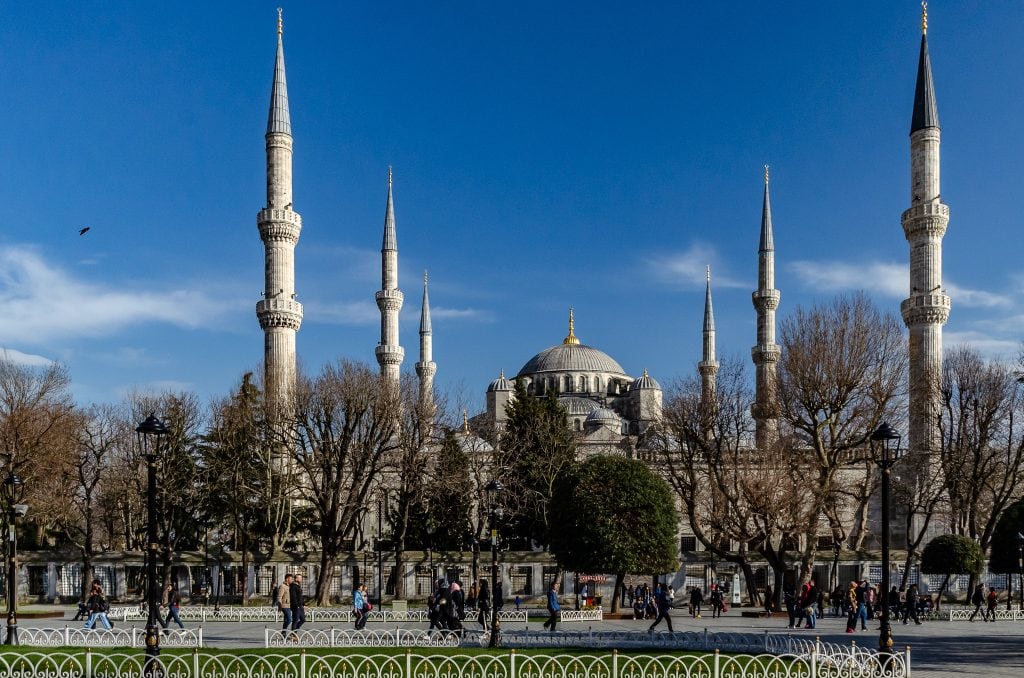
The Blue Mosque, or Sultan Ahmed Mosque was completed in 1617 during the rule of Ahmed I. The sultan wanted a large imperial mosque to commemorate his reign, and chose the site that had at one time been pat of the Byzantine Palace. He also removed parts of what was left of the hippodrome to make room for his grand mosque.
Some of the architectural elements of the Blue Mosque are the same as those used in the Hagia Sophia built 1000 years earlier, namely the use of large pillars to support an even larger dome. The Mosque has five main domes, eight secondary domes and six minarets. Legend says that the six minarets may have been a mistake.
The Sultan’s architect, Sedefhar Mehmet Aga, who was a pupil of the great Ottoman architect Mimar Sinan, supposedly mistook the request for “gold minarets” as “six minarets”. At that time, only the mosque of the Kaaba at Mecca had six minarets, so this was seen as being quite presumptuous of Sultan Ahmed. The Sultan made amends by ordering a seventh minaret to be added on to the mosque at Mecca.
The mosque’s outer courtyard provides access to water taps for the ritual cleansing that is required before worship.
The inner courtyard; which is as large as the mosque interior, is surrounded by decorated covered arcades.
It is the inside decorations that give the Blue Mosque its name, and that make it such a memorable place to visit. Every inch of the walls, ceilings and supporting pillars is decorated in shades of red, blue and gold Islamic designs.
The lower portions of the walls are covered with over 20,000 handmade Iznik tiles. The upper walls and ceilings are painted with elaborate designs and calligraphy. Islam does not allow painted images of people, so all the decorations are geometric or floral designs. There are also over 200 stained glass windows that add lots of light and more color.
The outline of the Blue Mosque dominates the Sultanahmet district’s skyline and it is especially pretty at sunset. The best spot to watch the sun set over the distinctive Blue Mosque silhouette is from the rooftop terrace restaurant of the Seven Hills Hotel.
In the evening, once the sun has set and the mosque is lit up, it has a completely different look and feel.
Little Hagia Sophia or Küçük Ayasofya Camii
A couple of blocks downhill (southwest) from the Blue Mosque is the Little Hagia Sophia. Like its bigger cousin, the Little Hagia Sophia started as a Byzantine church built by Emperor Justinian in the early 6th century. It was built as a Greek Orthodox church and was called the Church of the Saints Sergius and Bacchus. During the Ottoman Empire in the early 16th century, the church was converted into a mosque. The building was on UNESCO’s in-danger list until its restoration in 2007.
Unlike the larger Byzantine Hagia Sophia, the inside of the Little Hagia Sophia is much smaller and has a more human scale. The inside no longer has the elaborate frescoes or mosaics that are characteristic of a Byzantine church, but instead is minimally decorated in modern Islamic style.
The dome is an interesting octagon shape that looks more like an umbrella than a half sphere. It is supported by sixteen green and red marble columns with the original, intricately carved Byzantine capitals still present.
Sokullu Mehmet Pasa Camii
A few blocks uphill (north) from the little Hagia Sophia is the Sokullu Mehmet Pasa mosque. This mosque was also built by the famous architect, Sinan, in the mid 16th century. It sits on a steep hill so Sinan addressed this challenge by building a set of stairs that access the courtyard from the street below.
I am not sure if this mosque is usually open to visitors. After climbing the stairs to the courtyard, we were greeted by a group of young boys playing an intense game of soccer with a basketball. The doors to the inside of the mosque were locked, so I satisfied myself with taking photos of the outside. Eventually, a caretaker came by, and when he saw how interested we were, he led us inside for a few minutes and allowed us to take just a few photos.
In some ways, I found the inside of this mosque to be more breathtaking than the Blue Mosque. Its walls are also covered from floor to ceiling with blue-green Iznik tiles, but because of the smaller, more intimate space, the tiles have a much greater impact. One of the things that makes this mosque special to the Islamic faith is that is has four small pieces of black stone from the Kaaba in Mecca embedded in the walls of the mosque.
Mosque of Süleyman the Magnificent or Süleymanye Camii
Looking up at the Istanbul skyline from the Galata Bridge, the great Mosque of Süleyman dominates the skyline. Unlike some of the other mosques in the city which are surrounded closely by other buildings or markets, this mosque holds court high on top of one of Istanbul’s seven hills, looking down over the Bosphorus and the Golden Horn.
It seems fitting that the greatest Sultan in Ottoman history should have one of the largest mosques in the city. Süleyman the Magnificent was the tenth and longest ruling Sultan of the Ottoman Empire. During his reign from 1520 to 1566, he expanded the territory under Ottoman rule to its zenith and also instituted many cultural, social and artistic reforms.
Suleyman’s chief architect, the great Mimar Sinan, used the Byzantine dome and pillar design of the Hagia Sofia to build this great imperial mosque for his benefactor. Over the course of his very long life (he was the imperial architect to three sultans), Sinan built over 300 mosques, schools, bridges and other buildings, and the Suleyman Mosque is considered to be one of his greatest achievements.
If the Süleyman Mosque looks similar to the Blue Mosque, it’s because the Blue Mosque’s architect was one of Sinan’s students. With its large courtyard, tall dome and expansive interior, it does look similar to the Blue Mosque. But that is where the similarity ends. The interior decor of the Süleyman Mosque is much more understated and elegant.
The grounds of this mosque also have the mausoleum where Suleyman is entombed along with some of his family members.
One of the best things about this mosque is its location. From the back courtyard behind the mosque you get a fantastic view of the other hills of Istanbul, the Galata Bridge, the Golden Horn and the Bosphorus – make sure not to miss it.
Rüstem Pasa Camii
Downhill (north)from the Sülyman Mosque, toward the Golden Horn, is another beautiful mosque designed by the Ottoman Imperial architect Sinan. This little hidden gem of a mosque is a few blocks north-west of the Spice Bazaar and is itself surrounded by open air street markets.
A set of nondescript stairs take you to the second floor portico that marks the entrance into the mosque. Though small, the mosque is extensively decorated with traditional Iznik tiles, both inside, and outside. The mosque was commissioned by the Grand Vizier Rüstem Pasa, son-in-law of Süleyman the Magnificent, and its construction was completed around 1563.
Please note: when I visited Istanbul in March 2018 the Rüstem Pasha Mosque was closed for renovations.
Nuruosmaniye Camii
The Nuruosomaniye Mosque is not on the traditional tourist itinerary, but if you are near the entrance to the Grand Bazaar, then it is worth a quick stop. This is a slightly newer mosque, built in the mid 18th century. This mosque is an example of Ottoman Baroque architectural style and its design was inspired by the Baroque churches in Europe. There are no Iznik tiles here, just a big and bright open space with lots and lots of beautiful stained glass windows.
All of these mosques are easy to get to from the Sultanahmet area of Istanbul, either by walking or taking the tram. Each one is distinctive and unique, both in their style and their history.
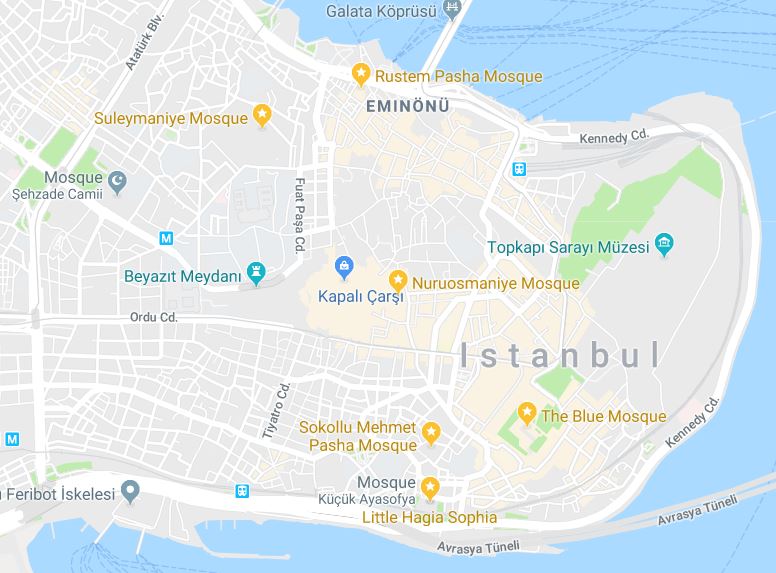
Other stories about my visits to Istanbul you may enjoy:
Beautiful Istanbul in photos: A Love Letter to Beautiful Istanbul
What a Turkish bath is really like: Bathing Like a Sultan – Overcoming Naked Inhibitions in a Turkish Bath in Istanbul
Discover the best street art in Istanbul: Finding Cool Street Art in Istanbul
Learn how to do traditional Turkish paper marbling: Traditional Turkish Paper Marbling – Learning Beautiful Ebru Art in Istanbul
A visit to the Hagia Irene: Istanbul’s Hagia Irene – A step Back in Time
Thanks for visiting.
Rose
Pin this!

